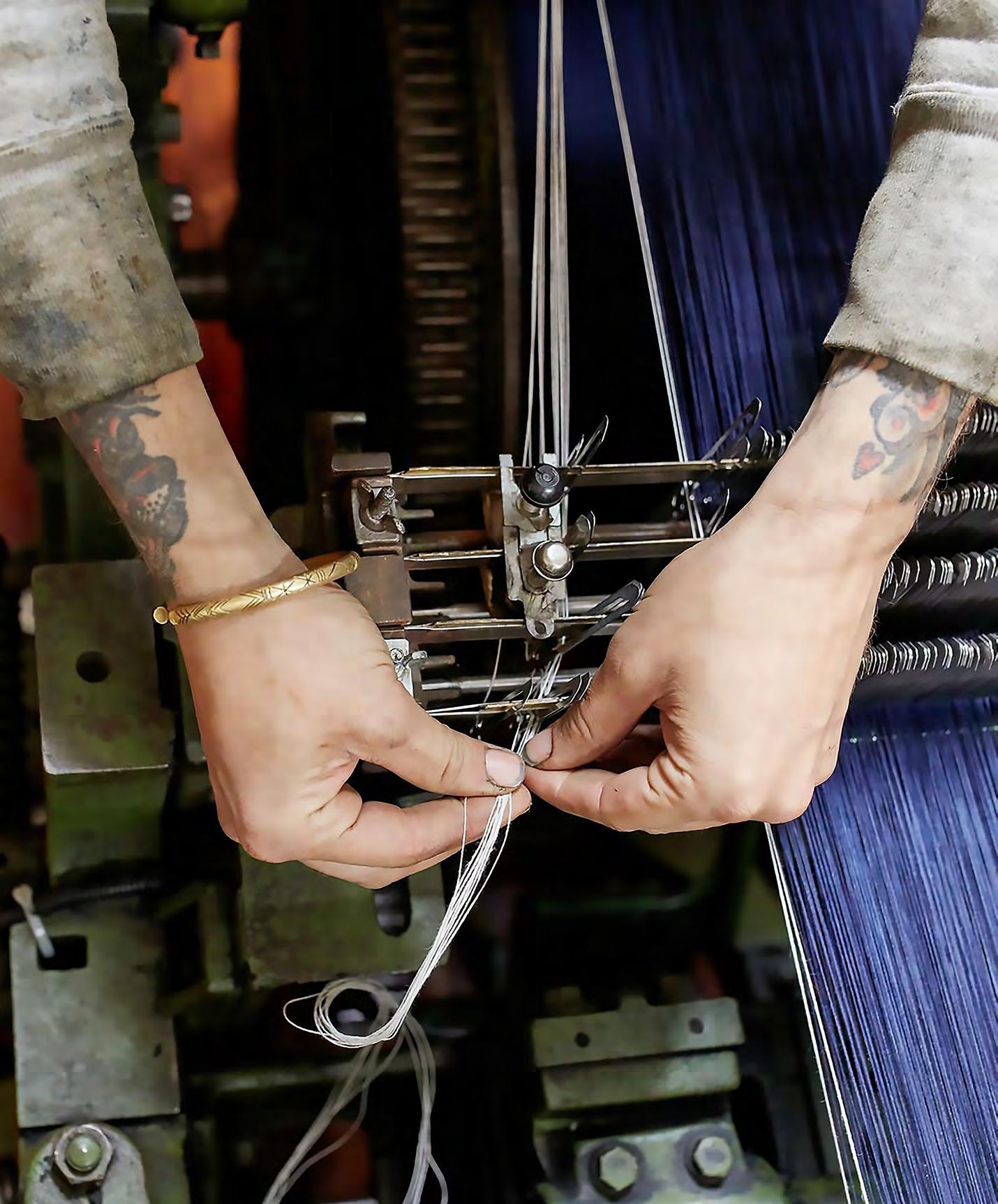

RED, WHITE ANDBLUE
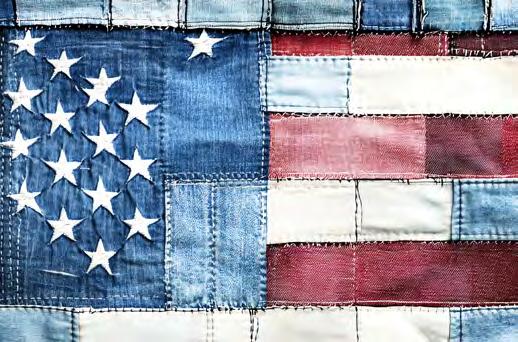
When president trump unveiled his board of tariffs on “Liberation Day” in April, one basic item landed in the media spotlight: blue jeans. Despite being manufactured primarily overseas for decades—the very reason they were swept up in the tariff wave—jeans became a lightning rod in the debate. The moment raised a pointed irony: why should Americans pay more for a garment so deeply woven into their cultural identity, even if it’s now made almost entirely overseas?
While the tariffs threatened to affect hundreds, if not thousands, of imported goods and dare I say more vital goods, it was jeans—a staple so quintessentially American it seemed almost sacred—that sparked concern. “Trump’s Mexico tariffs could hit American men right in the blue jeans,” Quartz stated. “Bourbon, bikes and blue jeans: Hitting back against Trump’s tariffs,” Financial Review declared. AP made sure to include the whole humble American uniform in its headline: “Tariffs will make sneakers, jeans and almost everything Americans wear cost more, trade groups warn.” SJ Denim certainly contributed to the headline melodrama meltdown, but denim is what we do.
The coverage served as a reminder of how the legacy of American-made denim stands in contrast to today’s global manufacturing reality.
In conversations I’ve had over the past six months with industry insiders about tariffs, U.S. manufacturing, and President Trump’s “America First” policy, the prevailing sentiment is clear: a thriving domestic denim industry is unlikely to make a comeback. The necessary investment, expertise, machinery, and skilled workforce simply aren’t in place. The swift decline of Vidalia Mills in Louisiana—if it can even be said to have truly taken off—is a telling example.
What the U.S. denim market does have in abundance is demand—but it comes from two very different camps with opposing American dreams: passionate small business owners committed to American-made products, and companies seeking convenient domestic production at the same low costs offered by overseas manufacturers.
All hopes appear to rest on Mount Vernon in Trion, Ga. to keep the denim dream alive (and to acquire Vidalia’s American Draper X3 looms). However, the mill has kept mum during the hoopla despite numerous attempts by Sourcing Journal to include them in this issue.
Perhaps it’s time to rethink what qualifies as a “Made in USA” jean. The FTC—which designated July as “Made in USA” month as culturally diverse observances vanish from the calendar—might not be on board. But maybe the most authentically American jean isn’t one defined by geography, but by spirit: a blend of origins, styles, and influences that mirrors the American consumer.
EDIT OR IAL
Peter Sadera Editor in Chief, Sourcing Journal
Angela Velasquez Executive Editor Meghan Hall Business Editor Jasmin Malik Chua Climate & Labor Editor
Kate Nishimura Senior News & Features Editor Glenn Taylor Logistics Editor
Alexandra Harrell Sustainability & Innovation Reporter
Lauren Parker Director Fairchild Studio/SJ Studio
Sarah Jones Senior Editor, Strategic Content Development
Andre Claudio Staff Writer, Strategic Content
ART DEPARTMENT
Ken DeLago Art Director
Logan Case Senior Designer
Trinity Krakora Designer
SOURCING JOURNAL ADVERTISING
Deborah B. Baron Advertising Director
Philip Redgate Account Director
PRODUCTION
Anne Leonard Production Manager
Adeline Saez Production Manager
Therese Hurter PreMedia Specialist
FAIRCHILD MEDIA GROUP
Amanda Smith Chief Executive Officer
James Fallon Chief Content Officer
Michael Atmore Chief Brand Officer
ADVERTISING
Melissa Rocco Senior Vice President, Sales
Samantha Rumsky Advertising Director
Jennifer Petersen Advertising Director, Fashion & Luxury
Stacey Lakind West Coast Director
Katherine Hogan Account Manager, Tech
Sherry Maher Account Director, Beauty
INTERNATIONAL OFFICES
Olga Kouznetsova European Director, Italy
Giulia Squeri European Director, Italy
Elisabeth Sugy Rawson European Director, France
MARKETING
William Gasperoni Vice President
Christine Staley Senior Director, Marketing & Fairchild Studio
Sara Shenasky Head of Client Activation
Barbra Leung Director, Integrated Marketing
Alexa Dorfman Senior Marketing Manager
Kayla Gaussaint Associate Integrated Manager
OPERATIONS
Ashley Faradineh Executive Director, Operations
Rosa Stancil Media Planner
Emanuela Altimani Senior Sales Coordinator
SOURCING JOURNAL IS OWNED AND PUBLISHED BY PENSKE MEDIA CORPORATION
Jay Penske Chairman & CEO
Gerry Byrne Vice Chairman
George Grobar Chief Operating Officer
Sarlina See Chief Accounting Officer
Ryan Young Chief Security Officer
Craig Perreault Chief Digital Officer
Todd Greene EVP, Business Affairs & Chief Legal Officer
Celine Perrot-Johnson EVP, Operations & Finance
Paul Rainey EVP, Operations & Finance
Tom Finn EVP, Operations & Finance
Jenny Connelly EVP, Product & Engineering
Ken DelAlcazar EVP, Finance
Debashish Ghosh Managing Director, International Markets
Dan Owen EVP, GM of Strategic Industry Group
Brian Levine Senior Vice President, Revenue Operations
Brooke Jaffe Senior Vice President, Public Affairs & Strategy
David Roberson Senior Vice President, Subscriptions
Frank McCallick Senior Vice President, Global Tax
Gabriel Koen Senior Vice President, Technology
Jerry Ruiz Senior Vice President, Oprations & Finance
Judith R. Margolin Senior Vice President, Deputy General Counsel
Karen Reed Senior Vice President, Finance
Lauren Utecht Senior Vice President, Human Resources
Marissa O’Hare Senior Vice President, Business Development
Nelson Anderson Senior Vice President, Creative
Andrew Root Vice President, Digital Marketing
Andy Limpus Vice President, Executive Search
& Head of Talent Acquisition
Anne Doyle Vice President, Human Resources
Ben Feldberg Vice President, Revenue Operations
Brian Vrabel Head of Industry, CPG and Health
Constance Ejuma Vice President, Content Performance & Analytics
Courtney Goldstein Vice President, Human Resources
Dan Gerber Vice President, Strategic Partnerships
Danielle Levine Vice President, Associate General Counsel
Denise Tooman Vice President, Marketing, Strategic Solutions Group
Eddie Ko Vice President, Advertising Operations
Gurjeet Chima Vice President, International Markets
Hector Nino Vice President, Human Resources
Jennifer Garber Head of Industry, Travel
Joni Antonacci Vice President, Production Operations
Josh Qualy Vice President, Programmatic Sales
Karl Walter Vice President, Content
Kay Swift Vice President, Information Technology
Keir McMullen Vice President, Human Resources
Lise Berichel Vice President, Associate General Counsel
Matthew Reed Head of Industry, Automotive Sector & DS Penske
Autosport Team
Michele Singer Vice President, Associate General Counsel
Mike Ye Vice President, Strategic Planning & Acquisitions
Richard Han Vice President, International Sales
Scott Ginsberg Head of Industry, Performance Marketing
Sonal Jain Vice President, Associate General Counsel
Tim Chan Vice President, E-Commerce
Tom McGinnis Vice President, Corporate Controller
Angela Jean Velasquez EXECUTIVE EDITOR
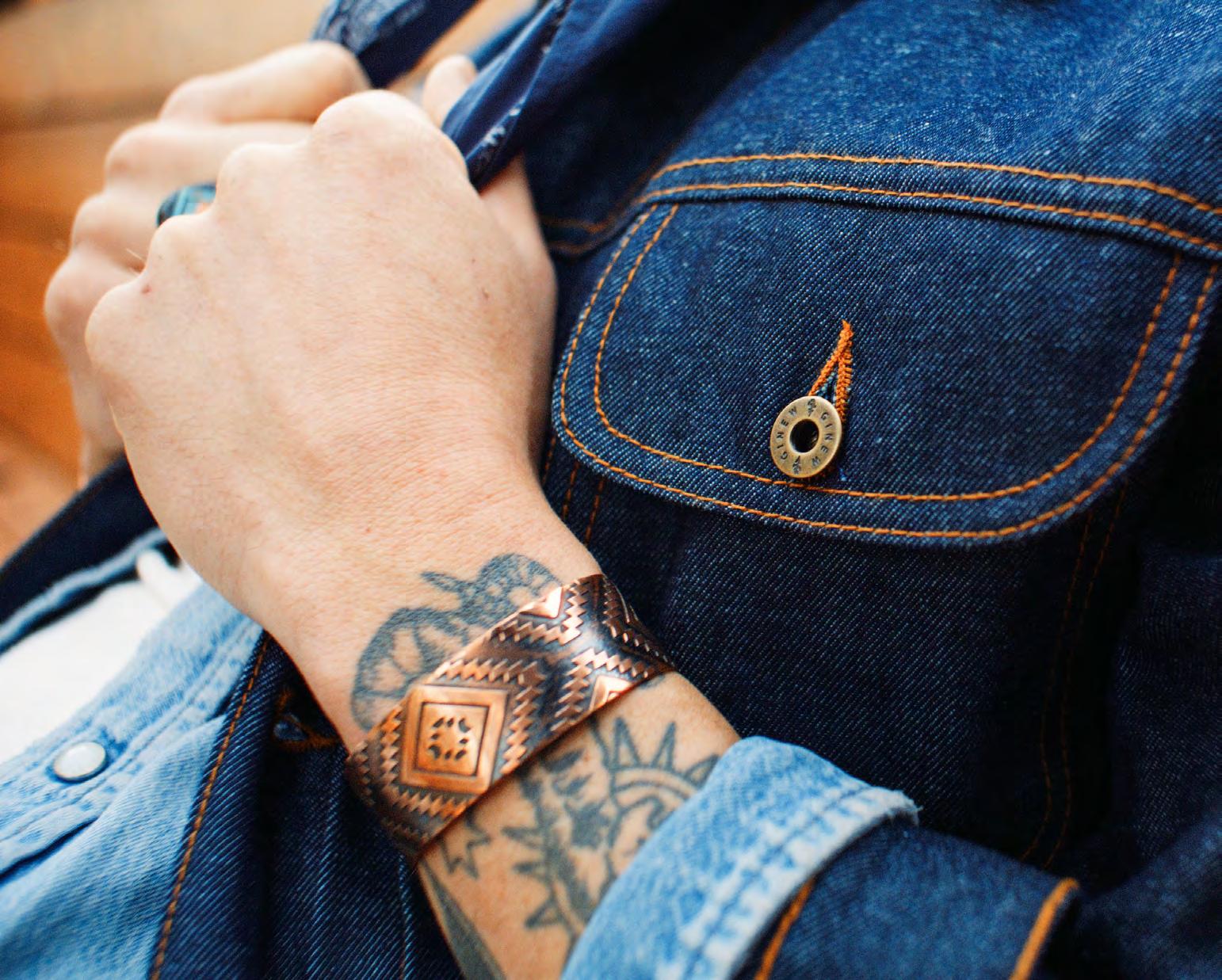
From denim history up for auction to Qore scaling the world’s first large-scale 1,4-butanediol made from dent corn, catch up on the news affecting the U.S. textile and garment industry.
Vintage retailers aren’t just selling clothes—they’re preserving culture, telling stories, and encouraging consumers to slow down and value garments that were made to last.
Lore
Nashville-based Imogene + Willie’s fosters a U.S. supply chain for jeans.
Photographer Matt Sharkey documents the final days of White Oak in a new book called “American Denim.”
MarkWest Denim enters the western market with saddle-tested jeans.
Proximity Manufacturing Company upholds Greensboro, N.C.’s longstanding denim tradition.
Origin USA founder Pete Roberts gives a candid look at what it takes to build a Made in USA movement.
Domestic denim brands face rising costs, labor shortages, and supply chain chaos—yet some refuse to abandon the Made in USA mission.
Growing Pains
Will Trump-sanctioned ICE raids stunt regenerative agriculture’s growth?
New factories and transparency pilots are advancing Latin America’s denim industry.
Recent consumer research from Cotton Incorporated highlights the key qualities people around the world look for in their denim—and how much they’re willing to invest in the perfect pair.
Proximity Mfg. produces limited runs of selvedge denim at the former White Oak property in Greensboro, N.C.
ACROSS THE U.S.
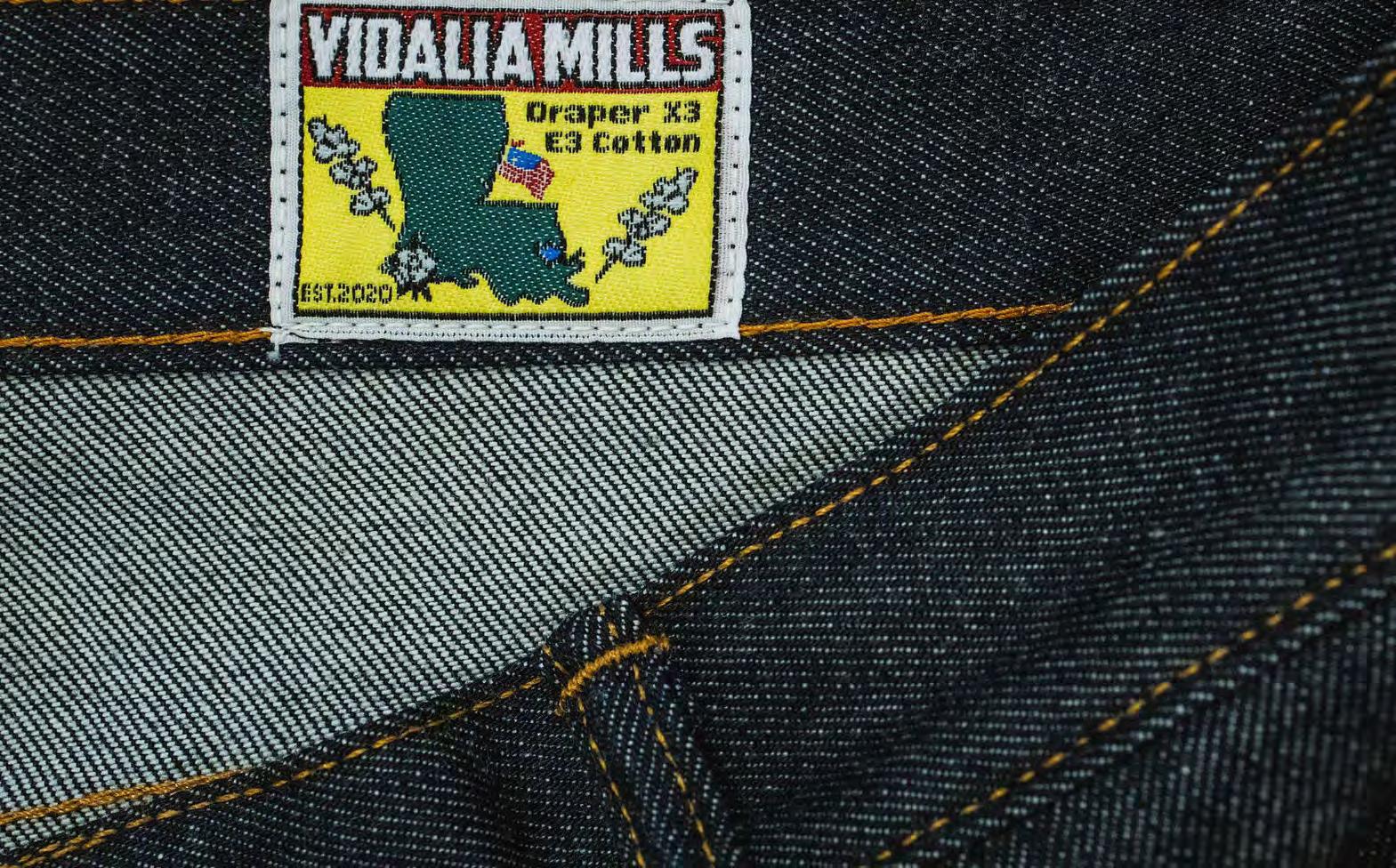
VIDALIA MILLS SALE
DATE AND INVENTORY CONFIRMED
Adate for the sheriff’s sale for Vidalia Mills is set.
The sale will take place on Aug. 6 at 10 a.m. CT at the Concordia Parish Courthouse in Vidalia, La. All property will be sold together. No bids will be accepted on individual lots or items.
SJ Denim obtained the final inventory of equipment. In addition to the 81.87 acres of land the mill sits on, the list includes 12 Draper X3 shuttle looms, an unspecified number of Draper X3 looms in the front office and 79 half stripped Draper and Picanol shuttle looms.
In 2019, Vidalia Mills acquired 40 American Draper X3 selvedge looms from the shuttered
White Oak facility in Greensboro, N.C. The mill went on to produce U.S.-made selvedge for brands like Imogene & Willie, Devil-Dog Dungarees and Ginew before quality issues and financial troubles arose.
The auction of the historic looms has stirred considerable attention across the U.S. denim industry, particularly among brands and manufacturers that value domestic production and authenticity. Several brands have expressed interest in keeping the looms on U.S. soil by making significant upfront investments to mitigate some of the financial risk associated with acquiring the equipment.
Mount Vernon in Trion, Ga. is widely viewed as the only obvious U.S. plug-and-play choice for the looms.
Other items on the inventory list include a partially installed warp dyeing slasher system, sewing equipment, testing equipment and
several Zinser ring spinning frames.
The sale of the now-shuttered denim mill was originally planned for April but was postponed due to inventory and other logistical issues.
According to 7th Judicial District Court documents, the mill owes approximately $32.5 million in principal, interest, and late charges as of Nov. 14, 2024 to the Jefferson Financial Federal Credit Union and Greater Nevada Credit Union.
In 2018, Vidalia Mills (also known as Vidalia Industrial Facilities, LLC) received a $25 million loan from Jefferson Financial Federal Credit Union and a $5 million loan from Greater Nevada Credit Union for equipment and working capital, the Concordia Sentinel reported. Additionally, the U.S. Department of Agriculture provided loan support through its Business and Industry Guaranteed Loan Program. ANGELA VELASQUEZ
The latest industry news affecting U.S. textile and garment manufacturing.
E Left Field NYC was one of the heritage-focused brands using fabric from Vidalia Mills.
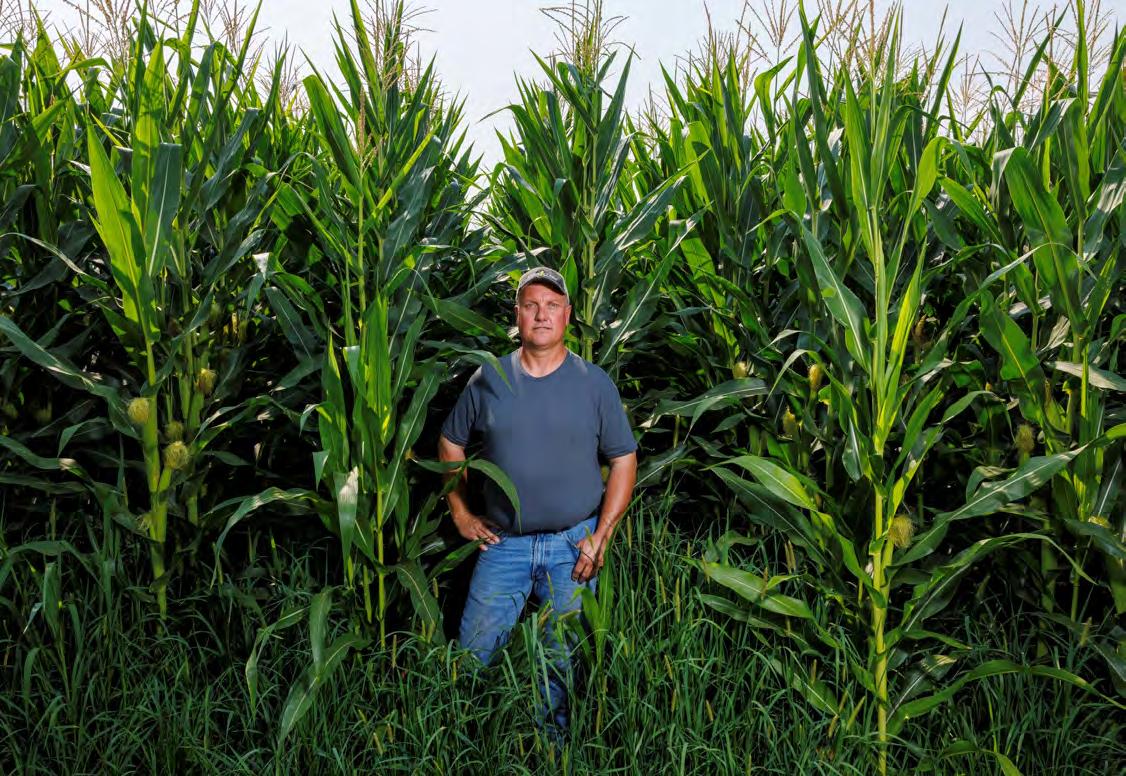
QORE OPENS
unemployed. That brings the sector’s unemployment rate of 3.6 percent half a point lower than the industry agnostic average of 4.1 percent. Nonetheless, unemployment in manufacturing has still come up half a point from June 2024, when it stood at 3.1 percent. June unemployment in the non-durable goods sector, which typically is inclusive of apparel, stood at 4 percent, up from 3.6 percent in June 2024. In June 2024, the sector shed 10,000 jobs.
According to the Institute for Supply Management’s Purchasing Managers’ Index (PMI) June report, textile mills reported negative employment growth for June. The mills simultaneously reported paying higher prices for raw materials, alongside all their industry counterparts. The mills also reported lower backlogs, decreased production and a contraction in new export orders in June. The PMI often counts textile mills separately from apparel, leather and allied products.
While industry agnostic work weeks declined by 0.1 hour to an average of 34.2 hours per week, manufacturing’s weekly average held strong at 40.1 hours. That may be indicative that the industry is working to preserve the longevity of the jobs it can maintain.
That all comes against the backdrop of Trump’s erratic trade strategy, which the administration has said will create domestic jobs and create a resurgence in domestic manufacturing.
FACILITY
$300 MILLION QIRA
Oore, a joint venture of Minnesota-based Cargill and Germany-based HELM, is officially starting production of Qira, the world’s first largescale 1,4-butanediol (BDO) made from locally grown dent corn. Qira is derived from annually renewable crops and serves as an impactful alternative to a fossilderived equivalent used in the manufacture of consumer goods including stretch jeans.
Qore celebrated the grand opening of the $300 million facility located in Eddyville, Iowa-based facility on July 22 with state officials, customers, farmer partners and industry leaders. The factory will produce 66,000 metric tons annually.
Qira is a key ingredient in The Lycra Company’s bio-derived Lycra EcoMade. Lycra and Qore teamed up in 2022 to enable the commercial production of the bio-derived spandex. Through this partnership, 70 percent of The Lycra Company’s spandex fiber content will be sourced from annually renewable feedstock, which is anticipated to yield a 44 percent carbon footprint drop, per LCA data.
Agolde introduced the first jeans made with bio-derived Lycra EcoMade in May. In addition to apparel, Qira can be applied to footwear, beauty and personal care products, automative and electronics and packaging.
“Qore is able to leverage the deep agricultural network and world-class fermentation technology expertise from Cargill and HELM’s global market reach to bring Qira to life,” said Jon Veldhouse, CEO of Qore. “By providing a reliable, renewable, and transparent feedstock, Qira helps global manufacturers and brands implement identical materials that reduce reliance on oversea supply chains, bringing more transparency to their product portfolios.”
The bio-derived feedstock is made from field corn grown in a 100-mile radius of Qore’s
facility in south central Iowa sourced chiefly from individual farmers. The farmers apply regenerative agriculture practices for growing dent corn. These practices are a holistic and inclusive approach to land management, meant to restore soil and ecosystem health.
Additionally, the proximity of the feedstock enables greater traceability and transparency throughout the supply chain.
“By offering a bio-based alternative to fossil-based feedstock, we are empowering brands to reduce their environmental impact and respond to consumer demands for transparency, more sustainable, high-performing products,” said Steve Kuiper, a fourth-generation Iowa farmer.
“Our community is proud to play a vital role in making everyday products more sustainable.” AV
U.S. MANUFACTURING JOBS
CONTINUE TO DECLINE DESPITE AT-LARGE JOB GROWTH
The U.S. added 147,000 jobs for June, marking higherthan-expected growth amidst question marks over tariffs and the economy. Economists had projected that number would grow by about 110,000 for June.
Still, the U.S. manufacturing sector lost 7,000 jobs last month, which follows a similar contraction in May, according to the Bureau of Labor Statistics (BLS).
Scott Paul, president of the Alliance for American Manufacturing, said he hopes the trade deals Trump has heralded ultimately shepherd in positive growth for domestic manufacturing jobs.
“Manufacturing jobs have been treading water for more than two years now, losing 7,000 in June. Factories have shed 150,000 employees since February 2023. While it’s evident there’s still a lot of factory construction activity that could bear fruit in the future, we’re not there yet,” Paul said in a statement.
BLS data shows that in June, 544,000 people in the manufacturing sector remained
OUR COMMUNITY IS PROUD TO PLAY A VITAL ROLE IN MAKING EVERYDAY PRODUCTS MORE SUSTAINABLE.” Steve Kuiper, farmer
E Qira’s feedstock is grown with regenerative agriculture practices.
G Manufacturing jobs are declining in the U.S.
Paul said the trade group hopes Trump’s actions catalyzes growth for the industry, rather than causing further job retraction. “My hope is that the successful resolution of bilateral trade deals and tariff rates after months of shifts will help boost the fortunes of factories,” he said in a statement. MEGHAN HALL

CAUTION AHEAD
a more measured
ongoing tariff negotiations , combined with weakening global economies and broader political disruptions, have added complexity to the traditional process of developing a new product season. As a result, mills say clients are approaching their orders with caution, prioritizing pricing clarity, supply chain stability, and value-driven sourcing.
“Brands and stores across the board are looking for value from their supply chain so there is a refocused energy in that direction,” said Henry Wong, AGI Denim’s VP, product development and marketing.
Umair Masood Tata, Naveena Denim Limited’s director of marketing, said recent tariff revisions and rising logistics costs have impacted overall order volumes and timelines. “As a denim mill, we’re doing everything we can to stay competitive by controlling costs, staying consistent in quality, and supporting our clients through close collaboration,” he said.
Mills are seeing clients approach the season with a sense of cautious optimism.
“While orders are moving forward steadily, the global market is currently shaped by a high level of uncertainty. Factors such as tariffs and geopolitical tensions are prompting buyers to be more deliberate and strategic in their purchasing decisions. Everyone is waiting for greater clarity before making bolder commitments,” said Anatt Finkler, Global Denim’s creative director.
This “cautious stance” is especially true with U.S. brands, according to Aydan Tuzun, Naveena Denim Mills’ senior vice president, sales and marketing.
“The introduction and ongoing uncertainty of new tariffs have caused hesitation in placing orders, with many clients choosing to delay decisions rather than take risks,” she said. “Additionally, ongoing disruptions in shipping routes, especially due to the Red Sea blockage, have led to extended lead times. These logistical and geopolitical challenges are prompting clients to plan further ahead and remain flexible in their sourcing strategies.”
China-based Prosperity has seen shifts in how clients are preparing for the season. “Political influence plays a crucial role in shaping clients’ decisions, particularly in times of uncertainty, before they finalize their orders,” said Stafford Lau, Prosperity director. “Tariffs and other geopolitical issues appear to be significant contributing factors to this trend, affecting client confidence and the volume of orders placed.”
By having production hubs in China and Mexico, Cone Denim has been able to offer clients some flexibility. Pierette Scavuzzo, Cone’s design director, said clients are exploring all order options this season due to uncertainty around tariffs.
“Brands are investing extra time and effort into preparing various sourcing strategies so they can quickly adapt if needed, ensuring

their deliverables and distribution remain unaffected. Having two production platforms in two different hemispheres has helped our customers seamlessly explore counter options with quick speed,” she said.
Though Turkey’s trade with the U.S. is relatively balanced and small compared to Canada, China, the EU and Mexico, Gizem Yaşar, Maritaş marketing chief, said it’s crucial to understand the impacts of imposed tariffs on U.S. economy. The U.S. has consistently been Turkey’s second-largest individual export market.
“Tariffs and trade policies play a crucial role in shaping costs and competition in the global textile and fashion industry. Trump’s politicized approach to trade and tariffs has accelerated protectionism and fragmentation in the global trading system,” she said.
Although the pace of fabric purchasing for collections has slowed down due to fluctuations in the global economy, Yaşar said brands are doing this with the aim of managing the process more deliberately.
Still, consumers’ wallets will be the hit hard. “Companies big and small will face higher costs on the goods they buy from other countries—and could have little recourse but to hike prices themselves. For consumers, that will likely mean more expensive prices [for] everything. As experts say, stagflation risk is on the table,” she said.
Maritaş’ plan is to remain agile and adapt strategies to upcoming changes. Yaşar added
that the company is already in a better position, having distanced itself from massmarket competition by focusing on advanced and sustainable product lines.
Being based in Turkey means Orta can provide a speed advantage in sourcing compared to other countries from a geopolitical standpoint. However, Sinem Kahveci, Orta’s marketing specialist, said uncertainties surrounding tariffs remain a concern. “Like the brands, we closely monitor all developments and continue our operations with cautious and measured steps,” she said.
However, Turkish companies are running into issues closer to home. In the last two years, Ibrahim Ethem Buyukpepe, Calik’s acting general manager, said there has been a 20 to 30 percent contraction in consumption in Europe due to inflation and uncertainty expectations. Contraction continues, evident in the demand for fabrics this season.
“In terms of tariff, American brands that carry out price-oriented production have started to add Turkey and North Africa options to their logistics strategies and are carrying out feasibility studies. However, [because] no clear steps have been taken for customs tax processes, the effect of the process has not been clearly observed,” he said.
As brands seek to navigate and mitigate supply chain disruptions, new opportunities are emerging for sourcing hubs that have
EVERYONE IS WAITING FOR GREATER CLARITY BEFORE MAKING BOLDER COMMITMENTS. Anatt Finkler,
previously remained under the radar.
Sharbati has seen interest grow for its Egyptian production over the last couple of years. “For sure tariffs have created a higher need for alternative solutions, and Egypt is seen as the best actual option being in the Mediterranean area, hence with faster and sustainable transit time,” said Stefano Dotto, Sharbati’s product design manager.
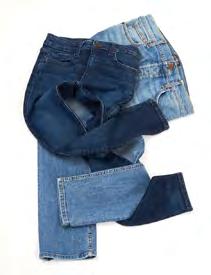
“In general, clients are approaching their orders with caution due to ongoing uncertainty in the retail sector. The impact of geopolitical tensions and tariffs, particularly between the EU, U.S. and Asia has led several clients to diversify their production and sourcing bases,” said Maria Mas, Evlox’s digital marketing director.
As a result, she said Morocco is gaining traction as a reliable nearshore alternative for European brands, thanks to its logistical advantages and trade agreements. Clients are also more aware of the origin of their components. Mas said Evlox is seeing a shift toward more sustainable and traceable denim, with clients requesting recycled and organic cotton, and placing more emphasis on environmental certifications.
DENIM
Brands take
approach to seasonal sourcing. by Angela Velasquez
Global Denim
E Cone’s customers are looking for versatile fabrics.
G Global Denim is seeing interest in 3x1 comfort stretch fabrics.

SOURCING JOURNAL THE YEAR AHEAD
From inseams to finishes, mills to marketing, each edition of SJ Denim shines a spotlight on the industry’s most relevant issues, trends and personalities. Be a part of our Fall or Winter issues!
FARM TO
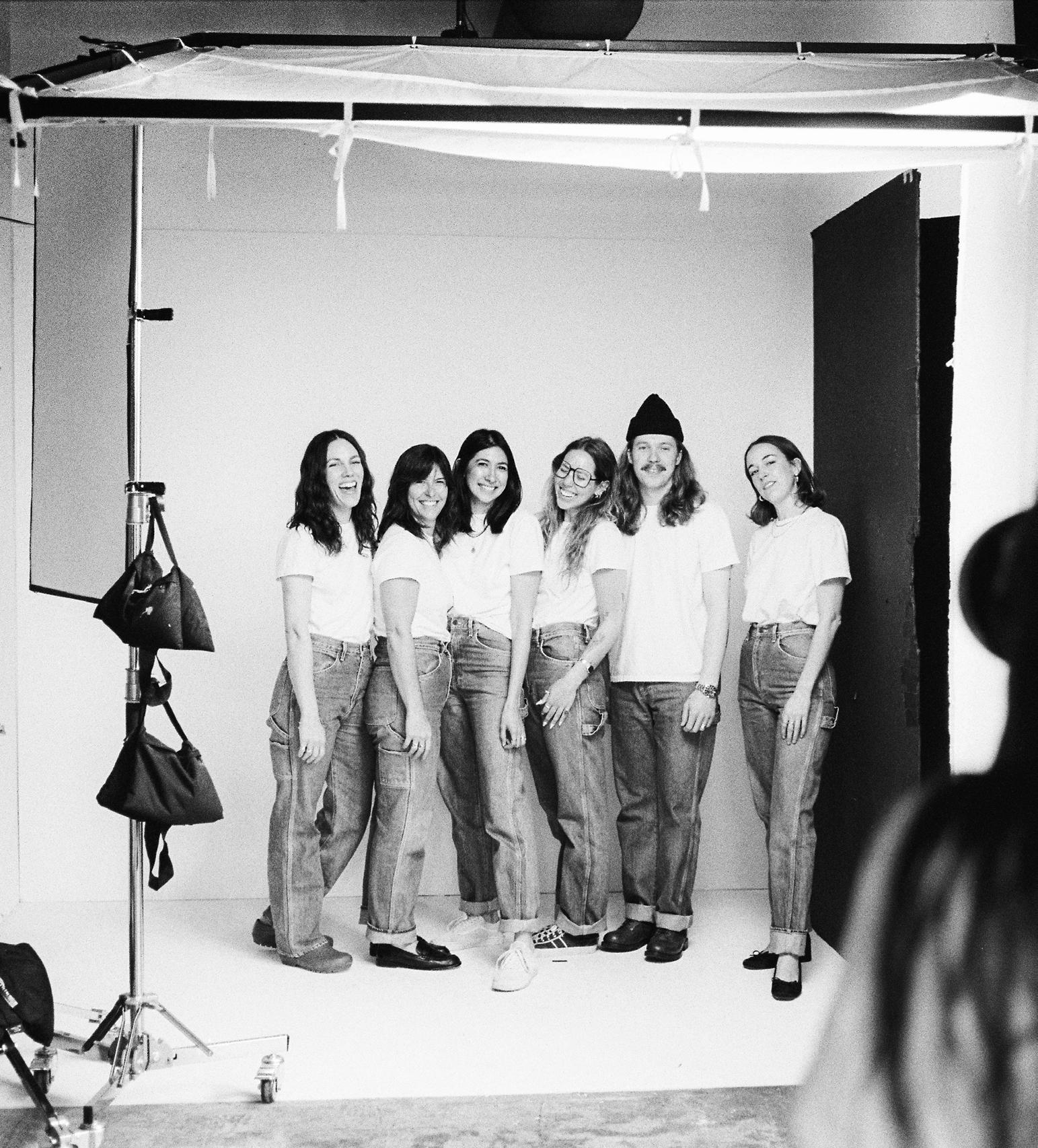
From cotton to indigo, Imogene + Willie’s fosters a U.S. supply chain for jeans. by Angela Velasquez
FASHION


with their latest jeans , Imogene + Willie put the U.S. denim supply chain to the ultimate test.
c The jeans are the second phase from the “Made in USA” brand’s Cotton Project, an initiative dedicated to growing, processing and manufacturing cotton onshore in the Southeast U.S. c The jeans are made with single-origin sources within a 400-mile radius of the brand’s Nashville headquarters. The regenerativelyfarmed cotton comes from Martin Farms in Courtland, Ala.; the natural indigo is from Stony Creek Colors, a regenerative farm that grows plant-based dyes including natural indigo in Springfield, Tenn.
Mount Vernon Mills in Trion, Ga., the largest denim manufacturer and the only remaining rope dye range in the U.S., produced the fabric.
“We always wanted to be able to do this in the denim space because, at our core, we are a denim company. Being able to work with locally grown natural indigo and the teams at Stony Creek Colors and Mount Vernon has been a dream for years,” said K.P. McNeill, Imogene + Willie CEO.
The collection marks the first time Mount Vernon has utilized natural indigo at their facility. The mill stopped production at their dye range, cleaned and sanitized the dye vats, and filled them with natural indigo from Stony Creek Colors. Since natural indigo costs more than synthetic indigo, the brand said experimenting with these production methods at this scale is unique, particularly in the United States.
Imogene + Willie’s relationship with Dale McCollum, who recently retired after 50 years of employment at Mount Vernon Mills, helped secure the mill’s involvement in the project. The brand said the mill was “willing to take a risk on uncharted territory with the small denim brand.”
“Mount Vernon is a hero of this story, as they are really the last remaining mill of their size making denim in the USA. They deserve
BEING
a lot of credit for still being there, innovating and changing with the times—to adapt and survive in an ever-changing supply chain landscape,” McNeill said.
For the collection, Imogene + Willie made a creative decision to select two utilitarian patterns as a nod to the workwear history of Mount Vernon. The Cotton Project collection includes the Hencye, a men’s double-knee work pant, and the Augusta, a women’s carpenter pant, both washed down to a soft and well-worn finish. The jeans retail for $265. This places the natural indigo jeans in the midrange of Imogene + Willie’s denim offerings, which range from $235 to $325.
Imogene + Willie established The Cotton Project in 2021 by purchasing a 22-acre cotton crop at Martin Farm. The brand offered a
ABLE TO WORK WITH LOCALLY GROWN NATURAL INDIGO AND THE TEAMS AT STONY CREEK COLORS AND MOUNT VERNON HAS BEEN A DREAM FOR YEARS.”
premium price 25 percent above market standards to ensure fair compensation for farmers while investing in regenerative agriculture before planting even began. A year later, Imogene + Willie doubled their investment in cotton crops.
The brand launched its first product from the project, a cotton unisex T-shirt, in May. However, the second launch of the project sends a clear message: this wasn’t just a oneoff for the brand.
“This is real life proof that we’re taking what we learned and advancing it. We want more and more of our business to be done this way,” McNeill said. “We’re making an attempt to do things differently, and if enough people in the industry attempt to do things differently, that will make a big impact.”
K.P. McNeill, Imogene + Willie
E Mount Vernon Mills adjusted its production to make the specialty fabric.
H Imogene + Willie chose workwearinspired fits for the collection.


MarkWest Denim enters the western market with saddle-tested jeans. by Angela Velasquez
WILD WEST
when whitney lloyd , an AQHA amateur rider, got back into the saddle after a 14year hiatus, it wasn’t the competition or the dynamics of the circuit that changed. It was the jeans. c “Jeans are the most essential garment for cowgirls. It’s what they wear every day, ride in, compete in—it’s a very important garment but you still want to look on trend,” she said. c However, Lloyd found that the new jean styles from major western brands weren’t cutting it. “Quite frankly, I just found that all of them had major issues. None of them really fit and functioned and flattered in the saddle, which is the most important place for a horse girl. We want to look good there. We want to feel confident and feel supported by what we’re wearing. And all the jeans that were out there just really missed the mark,” she said.
In 2022, Lloyd turned her frustration into a business plan to develop her own brand of saddle-tested jeans for fellow cowgirls. The Columbus, Ohio-based denim novice turned to Christine Rucci, denim expert and founder of Godmother NYC, Inc., initially for pointers and then for full-package support from fit and fabrics to setting up a U.S. supply chain. Lloyd said she felt confident that Rucci “would be the person who would get this done for me and kind of make these jeans a reality.”
Now, almost three years later, MarkWest Denim is preparing to enter the Western denim market with a single style that attests to Lloyd’s confidence what she and Rucci produced: a women’s stretch denim jean made from Cone Denim’s Parras, Mexico mill, manufactured in Los Angeles and washed by SFI in Commerce, Calif.
The jean features a hidden cellphone pocket that won’t interfere with the saddle, a gapfree waistband, pant legs that stack nicely above boots and won’t ride up or twist around boots, and a construction that eliminates the traditional front center seam—an uncomfortable detail that Lloyd said female
riders have learned to accept. “I thought there’s has to be a better way,” she said.
With her saddle in her living room, Lloyd and Rucci would meet over Zoom to review prototypes. Six were made in one fabric until they realized they needed one with more stretch because the post-ride recovery wasn’t up to their standard.
“We’re the only people doing a sport in blue jeans. We need fabrics that have enough stretch and can maintain its shape throughout the day,” Lloyd said. We spent a lot of time on little things like rivets; [namely] smooth-domed rivets that don’t scratch your saddle when you’re carrying it on your hip. “They won’t snag your delicate show clothes that people compete in. All those little details we spent a lot of time on to make sure that they’re really functional for our cowgirl customer.”
Making the jeans in the U.S. was a priority as well. “For a Western audience, and the horse industry in particular, there’s a lot of value on the tradition of the American West, the American cowboy and high-quality products that are made here in America,” she said. Though the fabric is made in Mexico, Lloyd said she’s proud to partner with a mill like Cone which has a long legacy in the U.S. MarkWest will launch this month.
The jeans will be available in sizes 00-18 and retail for $209.
THERE’S A LOT OF VALUE ON THE TRADITION OF THE AMERICAN WEST, THE AMERICAN COWBOY AND HIGHQUALITY PRODUCTS THAT ARE MADE HERE IN AMERICA…”
Lloyd has rolled out an aggressive social media strategy to share what MarkWest Denim is all about. She’s also relying on the connections she’s made over the years as an active member of the Quarter Horse circuit.
“It’s been very organic. The horse community is a very old-school community in that it relies on word of mouth. People pay attention to what people they know and trust in the industry are using,” she said. “I think consumers recognize that there’s a real need for jeans for cowgirls that are actually made by a fellow cowgirl who gets it and understands what we experience in the saddle.”
H MarkWest founder Whitney Lloyd addresses common issues women have with Western jeans.
Whitney Llyod, MarkWest
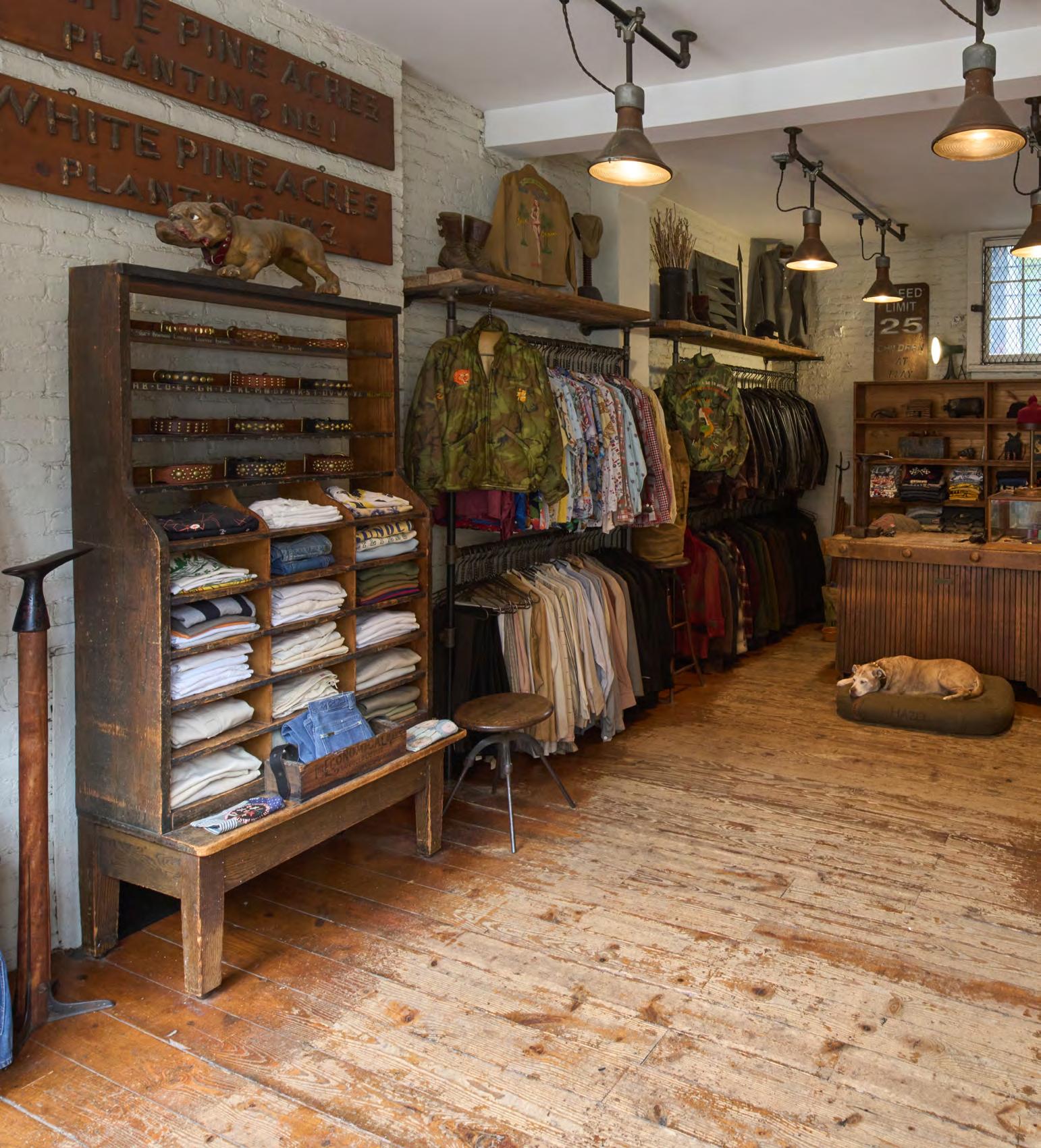
Meet the vintage shop owners preserving American fashion. by Angela Velasquez
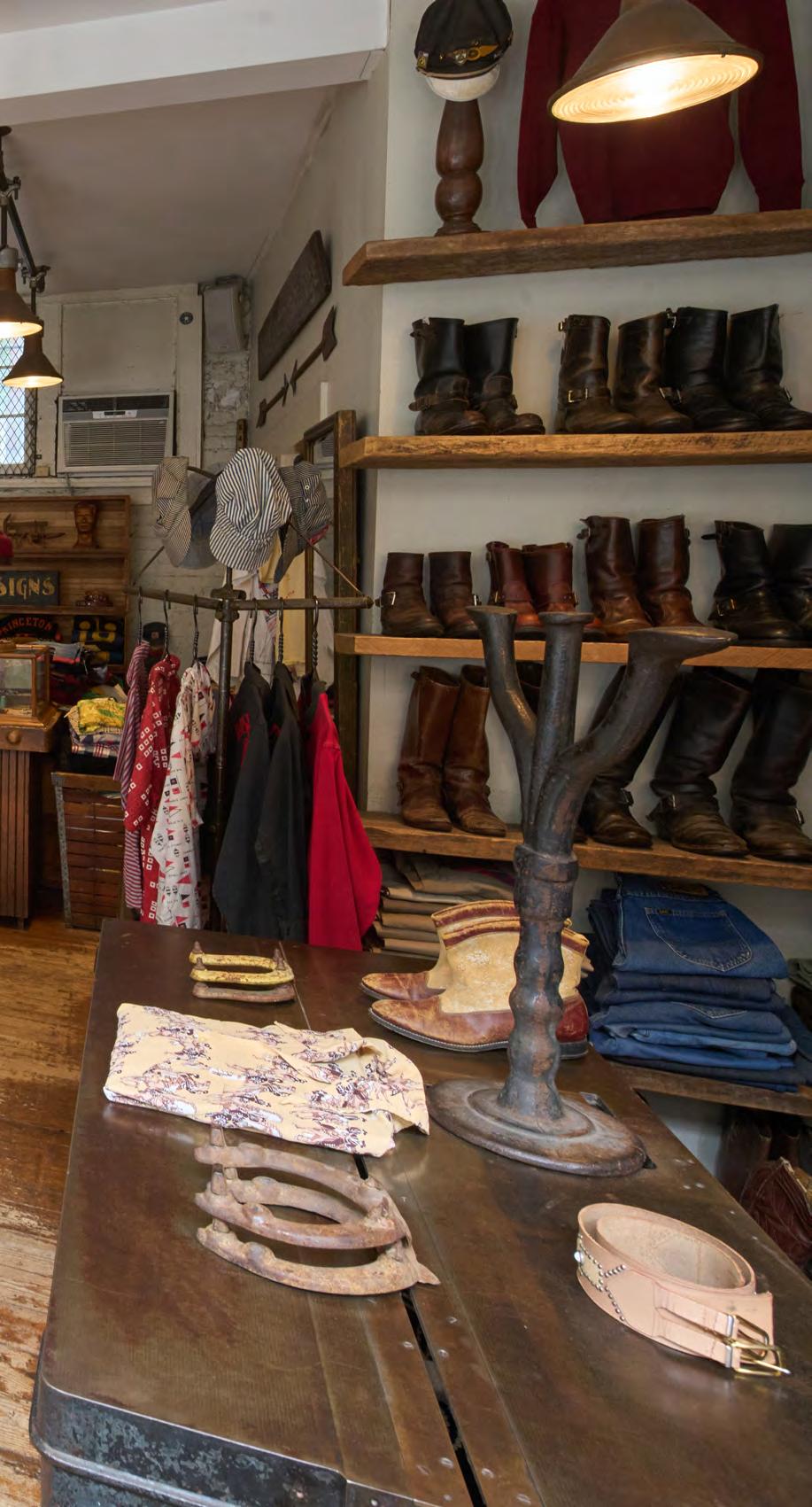
THE CURATOR
Stock Vintage 143 E 13th St., New York, N.Y.
stock vintage founder Melissa Howard wants you to hang on to your clothing.
Located in New York City’s East Village, the vintage emporium is approaching its 20th anniversary of offering carefully curated men’s wear and accessories from the 1900s to the 1970s to a discerning clientele of both locals and international visitors. Here, they can find everything from a collection of 1920s University of Pennsylvania gear by Spalding to a WW1 M911 sweater to a 1970s African American motorcycle vest.
When Howard opened the store in 2006, she already had a customer base from selling at the Chelsea Flea Market in the late ’90s. Many individuals and business owners she met through the flea helped spread word that Stock would become a premier destination for early American men’s wear.
“It was word of mouth that brought clients to my store. At the time that I opened Stock, the store was one of the few vintage men’s clothing storefronts in New York City,” she said, adding that most social media platforms were not prevalent at the time.
Howard sources garments largely from connections she has made over the years and through vintage clothing shows and flea markets. People also bring her pieces to the store. While she doesn’t focus on brands, some are exceptional for quality and are worthy of being collectibles like Levi’s, Big Yank, Double Wear, Hercules and Buco.
Some of Howard’s best scores were unearthed in the early ’90s like the time she found hundreds of never-worn Shorthorn Levi’s shirts, gaberdine shirts and Catalina shirts with painted swordfish in a warehouse for $4 a piece.
“My vision for the store has remained the same since day one,” Howard said. “I look for pieces with wonderful fabrics and details that stand out. I’ve always tried my best to maintain the integrity of what I bring into the store. The benefit to having my store is that I have clients that are of like minds and appreciate the history of the pieces.”
While Howard’s vision has remained steadfast, the strictly brick-and-mortar store has embraced social media to a degree. Stock Vintage has 24.9K followers on Instagram. However, the same platform has dimmed the excitement of finding a special piece. “It was a bit more enjoyable when you organically found a great piece and there wasn’t any documentation online,” she said.
Pieces from Stock are often plucked by stylists for celebrity editorials for Vanity Fair, Esquire and GQ. From musicians and photographers to designers and artists, the store is a source of inspiration for New York City creatives—not for replicating designs but for creating new ideas.
CAPSULES
H Stock Vintage focuses on fashion from the 1900s-1970s.
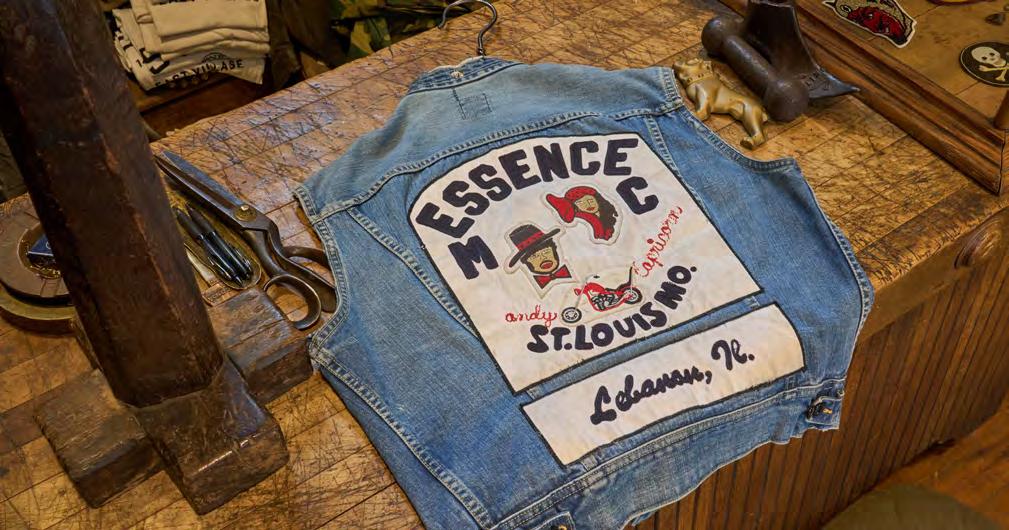
“Designers like to look at the stitching, details and how a garment has worn over time,” Howard said. “I think that designers have an affection for older designs because once upon a time, these garments were new ideas and new fabrics, and they were developed all over the world in small factories and small spaces, not mass produced.”
For Howard, being a vintage clothing dealer is a lifestyle, informing how she searches for quality pieces for her closet and home. “My home reflects my store in many ways,” she said. “I love early folk-art objects and furniture. What I sell in my store is also how I live. When I include objects in my store displays, I always try to keep in mind how it relate to the garments that I display to tell a story.”
Collecting is in Howard’s DNA. “My mom has been an antique collector and dealer for as long as I can remember,” she said.
When Howard was 12 years old, her mother opened a store in Michigan selling new women’s high-end clothing and accessories alongside early American furniture. She helped at the shop but eventually stepped away to partner with an existing vintage clothing store.
Howard gravitated to men’s wear. “Being a bit of a tomboy myself, I have always had an affection for older men’s wear from the early 1900s to the 1970s,” she said.
Part of the appeal of men’s vintage clothing is its scarcity. Growing up in Michigan, Howard said she would go to estate sales in the early ’90s and the men’s closet was always smaller than the women’s closet. “Women were always bigger consumers of clothing. Men would have a handful of suits that they would rotate week after week and some casual wear for the daytime and weekend,” she said.
Customers who come into Stock Vintage are often amazed that the garments have stayed in good condition. Howard said it’s a testament to how clothing manufacturers of the past focused on building garments to last. What amazes her is how someone chose to save these items and hang on to them for future generations.
Consumers are especially less precious when it comes to men’s clothing. Whereas someone might see the monetary or sentimental value of a woman’s dress or handbag, dungarees and leather belts are often treated with less regard.
“I often ask some of my male customers if they plan to save what they are currently wearing, whether that be Ralph Lauren, J Crew, sneakers, etc., for their kids in the future, and they usually say no,” Howard said. “This is why it’s amazing that any of us vintage clothing dealers can find the vintage items that we have.”
THE GRANDMILLENNIALS
Low Timers
3207 Burgundy St. New Orleans
nestled in new orleans’ laid-back, artsy Bywater neighborhood, Low Timers is a compact time machine filled with stylized Americana fashion predating the 1970s, vintage signage, old school trophies and pendants and few taxidermy animals.
Co-founders Ham Smith and Kelsey Christian launched Low Timers online in 2017. The business went analog in 2019 when they opened the brick-and-mortar store. Appealing to consumers searching for a piece of history, the store has gained a following of visitors hunting for unique souvenirs, designers on inspiration trips and local eccentrics.
“We’ve also been described as eclectic grandpa, which I love. It captures what we specialize in,” Christian said.
Smith and Christian’s respective grandfathers were their catalysts into vintage fashion. Christian said it’s what they initially bonded on and eventually realized they could turn it into a business. “Both of us are obsessed with our grandfathers. They were kind of working class and wore the type of clothes that we now collect and sell. They both passed away when we were relatively young, so I think clothing kept our obsession going. We were both seeking out these things to feel closer to our grandparents,” she said.
“My hobby is now my job,” Smith said. As a teenager, Smith said he would scour thrift stores for the types of button-up shirts, jeans and hats his grandfather wore. “I didn’t exactly know what I was looking for—I just thought looked cool at the time. And it kind of evolved into making and upcycling clothes. Then I would go to vintage stores, thrift stores and antique stores and just look for stuff that I thought was interesting. It didn’t even have to be my size. It could just be something I thought was cool to look at,” he said. “And then it just kind of snowballed.”
Smith estimates that 95 percent of the apparel they sell is “Made in USA.” Recent denim pieces have included 1950s Big Smith overalls with original repairs, a pair of 1960s selvedge jeans from Foremost, a two-tone 1950s Lee 101-J jacket and 1960s carpenter jeans from Carter’s and Sears, the latter lined with fleece. Worn-in tees, chainstitched button-up shirts, faded sweatshirts and knitwear—many with collegiate and varsity motifs—make up the bulk of Low Timers’ assortment. Graphic tees from pizza shops, hardware
MY VISION FOR THE STORE HAS REMAINED THE SAME SINCE DAY ONE.
I
LOOK FOR PIECES WITH WONDERFUL FABRICS AND DETAILS THAT STAND OUT.”
Melissa Howard, Stock Vintage
stores and other small-town businesses tap into the growing trend for localized merch.
Low Timers sells their own “shop shirts,” a.k.a. vintage pieces that Smith and Christian customize and upcycle with custom graphics and chainstitching.
While brands are mostly irrelevant at Low Timers, there are a few heritage names in workwear that get collectors excited. “Levi’s is an obvious one, but I love Sears,” Smith said.
“Sears is a highly underrated brand. All those big department stores back in the day had smaller brands like Hercules and JCPenney had Big Mac. Those are my favorites.”
Being part of the vintage community has impacted all aspects of their lives. Christian said they have a greater appreciation for the value and history of vintage fashion, and the process it took the seller to put it back in circulation. Smith added that they tend to pick up clothes for themselves during their sourcing trips instead of buying new ones.
Estate sales, yard sales, and connections with rag houses form the backbone of Low Timers’ vintage ecosystem. However, it’s often the sourcing trips to Smith’s home state of Virginia that yield the most obscure brands and rare pieces—items that never made their way down South. According to Smith, vintage Americana fashion serves as a reminder of just how regional the apparel industry once was.
“Where I’m from in Virginia, there weren’t any big department stores, and traveling to a big city was an event,” he said. “It wasn’t something that people did regularly. So, the way that they got clothing was through small general stores that sold groceries and farm supplies. That’s where everyone got their
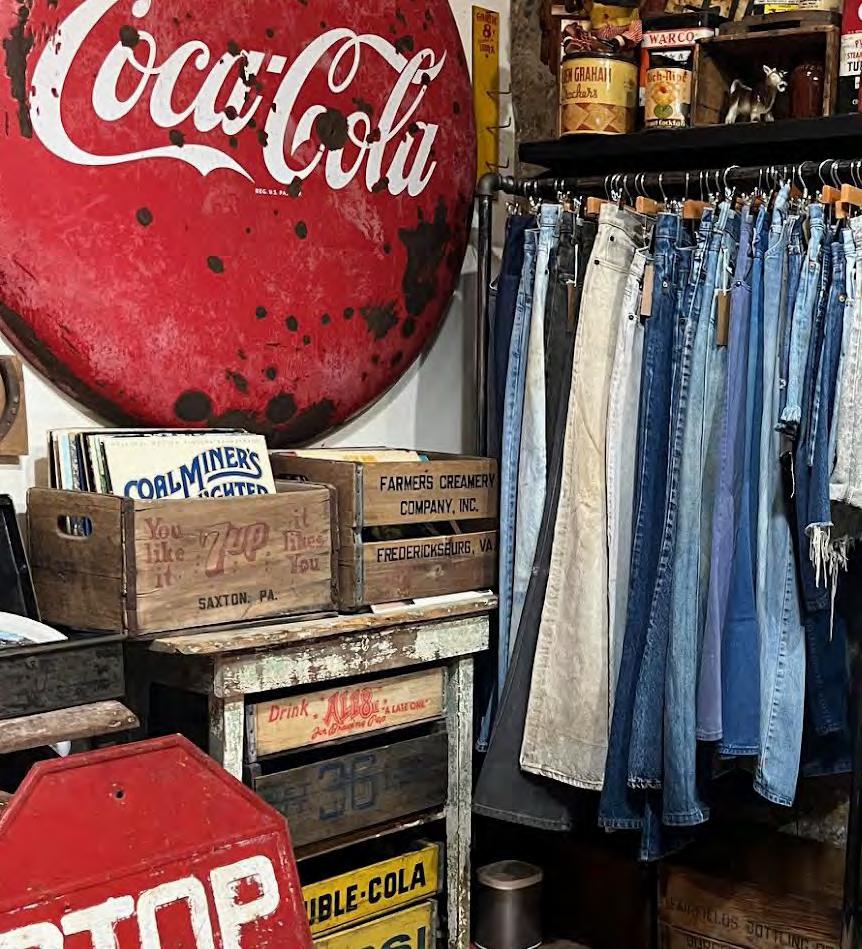
E Stock Vintage’s clientele spans stylists, celebrities and fans of slow fashion and heritage design.
G Low Timers merchandises vintage fashion with Americana memorabilia.
clothes. Manufacturers that were in Virginia or North Carolina basically sold only in Virginia and North Carolina. It wasn’t very common for them to be a national brand.”
Online marketplaces, coupled with the popularity of estate sales for social media content, is changing the vintage market. In the past, estate sales would draw a few early birds for clothing. Now, Smith said there are hundreds of high school and collegeage people lining up hours before doors open. Additionally, Christian said sellers are becoming savvier, checking comps on eBay to turn a profit. “Not long ago you could buy a pile of clothing for $10. Now they’re pricing items out piece by piece,” she said.
“I couldn’t tell you how many times in the past year I’ve gone to an estate sale and picked up something like a jacket, and there’s a $150 price tag on it, and it’s something that we would sell in our store for $50,” Smith said. “The pricing is very out of touch, but everyone knows that the vintage business is booming, so they’re going to throw a crazy price out there and hope that someone who doesn’t know any better will pay it. And that keeps driving the prices up.”
However, what newcomers don’t realize is the Golden Rule stating, “do unto others as you would have them do unto you” applies to vintage retail.
“We’re always try to be as straightforward and fair and honest as possible, and that has been our biggest success,” Smith said. “We don’t want someone to take advantage of us, so we’re not going to take advantage of them, and in turn, we’re given more opportunities to buy.”
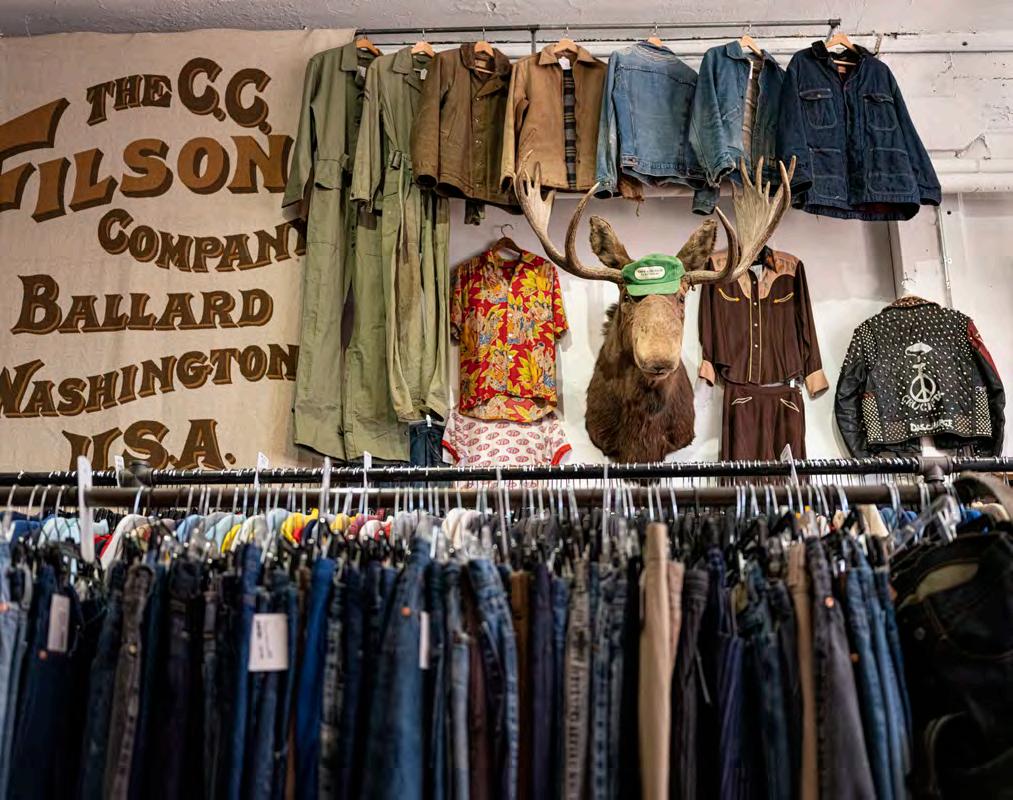
THE FILSON EXPERT
The Barn Owl Vintage Goods 6012 12th Ave. S, Seattle
BOTH OF US ARE OBSESSED WITH OUR GRANDFATHERS. THEY WERE KIND OF WORKING CLASS AND WORE THE TYPE OF CLOTHES THAT WE NOW COLLECT AND SELL...”
Kelsey Christian, Low Timers
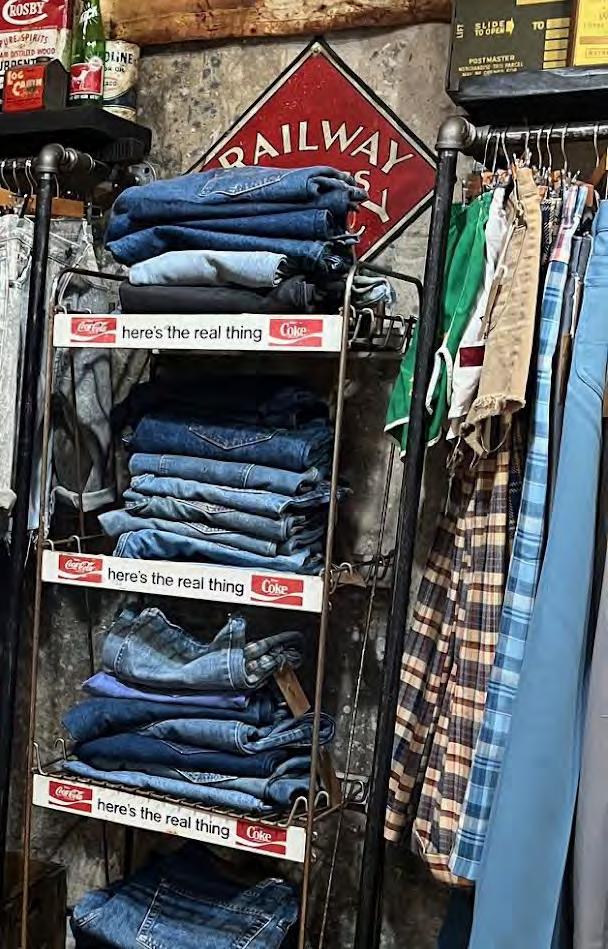
josh dand, owner of The Barn Owl in Seattle, is preserving a piece of American history—one “Made in USA” T-shirt and pair of jeans at a time. Opened in 2021, The Barn Owl Vintage Goods has become a destination for the finest in vintage workwear, denim and tees from the 1920s to the 1990s.
Dand’s passion for vintage began early. “My father was a collector. He collected records and books, and that lifestyle kind of led me into collecting the same things as well as vintage clothing. Vintage clothing was kind of how you developed your own style when you were young. I work vintage pieces in with modern stuff and created my own style,” he said.
That approach to styling has struck a chord with his customers. A shared appreciation for timeless fashion brings together The Barn Owl’s wide-ranging clientele—from high schoolers on the hunt for standout vintage tees to shoppers seeking rare, one-of-a-kind finds. “I think my average shopper is someone who has an appreciation for the well-made goods of the past but also is looking for a modern way to work them into their style,” he said.
Classic American fashion and workwear is the “meat and potatoes” of The Barn Owl, where consumers can find Levi’s sherpa Type III jackets, Lee chambray shirts, Wrangler gas station jackets, Pendleton and Woolrich flannels, heaps of Filson gear and graphic T-shirts—all “Made in USA.”
“Unfortunately, long gone are the days when there were mills throughout the country. If you look through the history of this country and garment production, it has been people chasing lower labor costs and mills moving from New York to Pennsylvania to North Carolina and South Carolina and then overseas,” Dand said.
“The goods that were made in the United States were built to last. So much of what is produced nowadays is meant to be disposable. I would rather repair something and keep it in
circulation for decades than to go ahead and buy something new.”
Dand has a special affinity for Seattle-based Filson. In addition to The Barn Owl being the leading source for vintage Filson in the U.S., he has written a guide on dating and verifying vintage Filson. “I’m kind of the preeminent Filson expert,” Dand said. “People reach out to me for verification on pieces.”
Whereas many vintage retailers stay offline, The Barn Owl embraces e-commerce. A dedicated online team powers The Barn Owl’s online business, which Dand said does a “healthy amount” of sales. While investing in e-commerce has paid off many times over, he said there’s “no substitute for being able to develop a relationship with a piece of clothing by coming in, touching it, feeling it, trying it on, seeing how it fits exactly.”
Selling vintage jeans online is especially challenging. When it comes to denim online, Dand tends to focus on tops and jackets because are a “little more universally sized” compared to the various iterations of Levi’s 501s over the years. “I have people come in and spend an hour or two, trying on jeans, going in and bringing stack after stack,” he said. “That’s the only way you can do it.”
Spending time with customers also gives Dand a front-row seat to emerging trends. “The thing that I always find interesting is I have several shoppers from Japan who come through. And in a lot of ways, I follow what the Japanese are buying—that’s the next big thing,” he said.
While vintage fashion often stands in contrast to fleeting trends, Dand says there’s still an ongoing evolution in how it’s curated.
“It used to be that I couldn’t sell an Aloha shirt to save my life, and over the past couple of summers, I’ve seen a ton of interest in the shirts. Same with leather jackets. I just had someone in here looking for a vintage 1950s or ’60s leather jacket,” he said.
Jeans, however, are always in the forecast. “I always feel like American-made denim is one of those iconic bits of workwear that people are always going clamor to, and we’ve got the biggest selection in Seattle,” he said.
E Classic American fashion is the “meat and potatoes” of The Barn Owl.
LOOM LORE
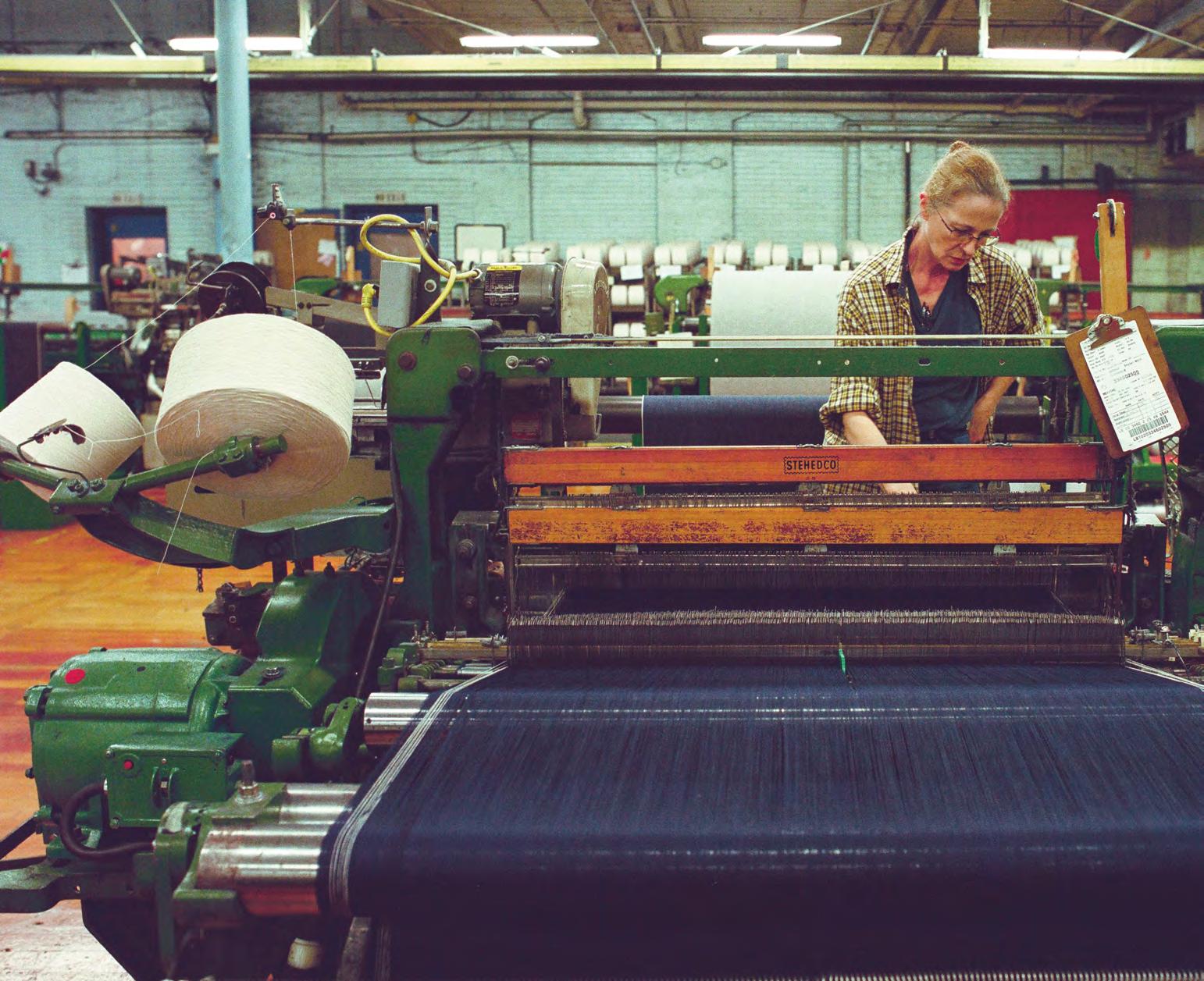
“american denim” aims to preserve the legacy of Greensboro, N.C. White Oak, its employees, and a unique time in the history of American textiles. Photographed by Matt Sharkey, the 224-page hardback from Schiffer Publishing tells the final chapter of the plant’s story through 200 color photos curated into three parts: White Oak’s final days of operation, its closure, and its revival making selvedge denim again under the care of the White Oak Legacy Foundation and Proximity Manufacturing Company. c A part of Cone Denim, the White Oak plant ended its 112-year run of continuous production in Greensboro in December 2017. International Textile Group, Inc. (ITG), the then-parent company of Cone, said that despite efforts to manage changes in the market, the demand for White Oak selvedge had significantly decreased as customers had transitioned more of their fabric sourcing outside the U.S. ITG said the plant’s large size provided more capacity than was needed resulting in a significantly higher manufacturing cost that could not be supported.
Opened in 1905 by brothers Moses and Ceasar Cone, White Oak in Greensboro, N.C. became the largest denim mill in the world occupying more than a million square feet. By 1910, it was supplying a third of the world’s denim demand. Between 1915 and 1970, the lion’s share of denim produced for Levi Strauss & Co. was made there. It’s selvedge denim made on Draper X-3 looms became blue gold. Part of White Oak’s legacy is the deal Cone struck with Levi’s in 1915 which gave the brand exclusive rights to its XX 501 selvedge fabric produced at White Oak. “There are many brands that have significance—Wrangler, Lee, Blue Bell—in the denim space. But I think there’s been a huge hat tip to Levi’s for over 100 years for being the original, at least in the commercial eyes of the world for denim globally,” Sharkey said.
Photographer Matt Sharkey documents the final days of White Oak in a new book. by Angela Velasquez
E Sharkey shot over 900 images on film during his visits to White Oak.
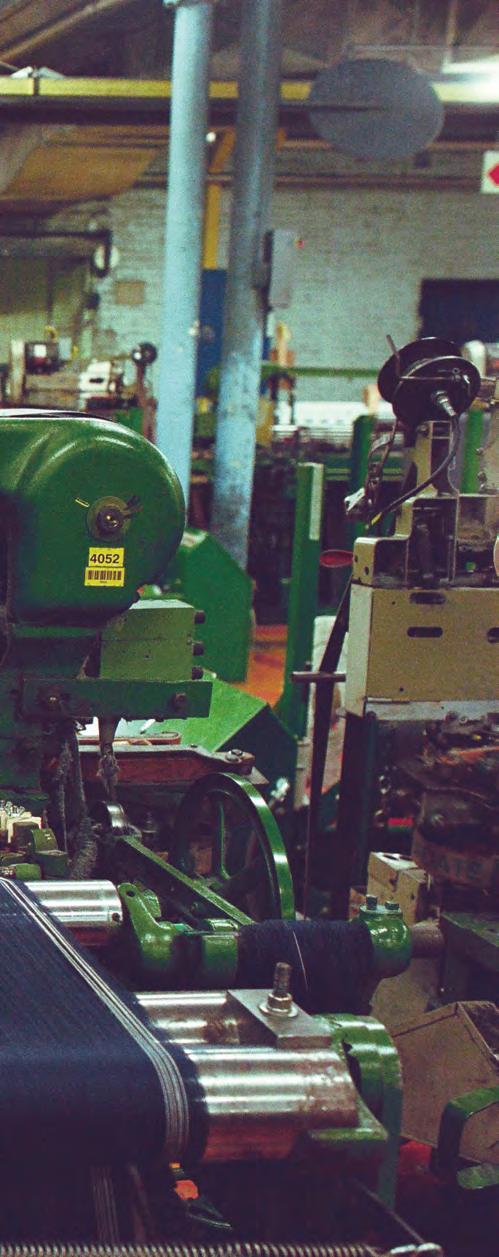
For denim brands emerging in the ’90s and 2000s, using White Oak denim became a way to tap into the legacy of the U.S. textile industry and align themselves with Levi’s storied origins. Incorporating White Oak selvedge signaled a dedication to craftsmanship, authenticity, and heritage. For consumers, wearing it wasn’t just about quality—it was a subtle badge of clout. While Levi’s remained the No. 1 customer of White Oak selvedge until its closure, the plant produced large volumes for small brands like Tellason and Raleigh Denim.
Whereas other manufacturers of the same size and in the same categories have focused more on production and less on marketing and media, Sharkey said White Oak was keenly aware of its significance.
“To White Oak’s credit, they did a good job of telling their story and connecting their
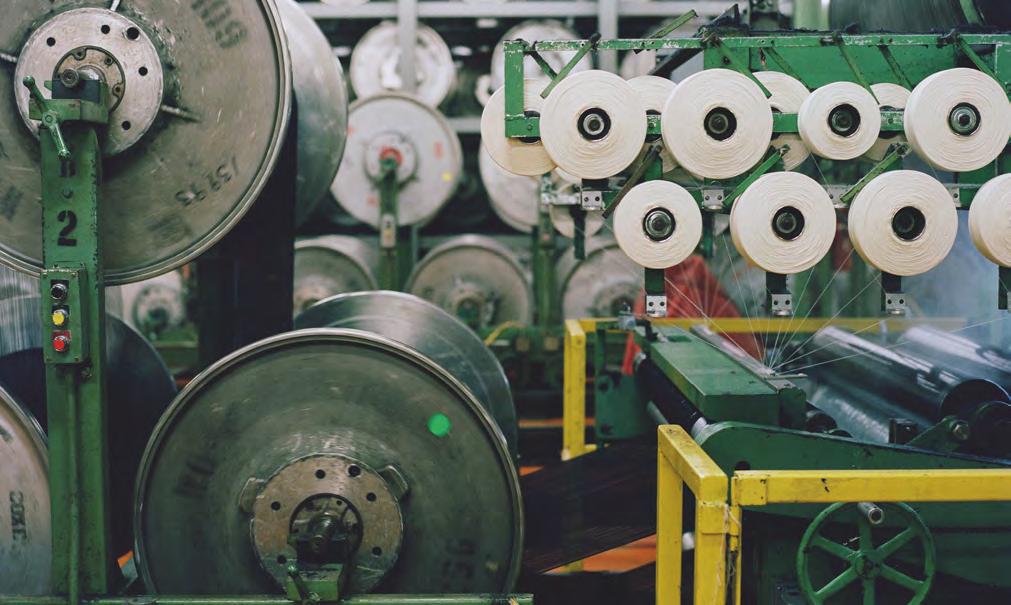
cloth to cultural moments in music and art,” Sharkey said. “They allowed the spotlight and told this great American textile town story where every house around that factory was owned by Cone, and everybody who lived there worked there. It is an incredible story that ran for a very long time and is the legacy of multigenerational families that work there as well. I think a big part of their storytelling, and their ability to capture that story is to let others tell it and share it.”
Sharkey revisited the empty and vacated facility in February 2018 and again in 2022 to document how Evan Morrison continues White Oak’s tradition of producing selvedge denim on old Draper X-3 looms. The coowner of Hudson’s Hill, a Greensboro-based American general store, helped formalize the establishment of White Oak Legacy Foundation in 2020. The following year, he built the production arm of the non-profit organization, which has since spun off, and begun weaving narrow shuttle denim on Draper X-3 looms at the White Oak plant under the name Proximity Manufacturing Company. The name is a nod to Proximity Cotton Mills, the first denim mill founded by the Cone brothers in 1895.
Sharkey’s first visit to White Oak was in 2016 when he directed a commercial for Portland, Ore.-based Chrome Industries. The performance apparel and accessory brand was using the mill’s Dyneema fabrics. That fall, he opened Bleacher Critic, a retail store in Petaluma, Calif. with a strong focus on “Made in USA” brands like Tellason Denim, the selvedge denim brand that produces jeans in San Franscisco. “We knew that we weren’t going to be 100 percent ‘Made in USA’ because the price threshold for that would not reach our customer. But we wanted to be a store in our community and help people on price per wear and all those things,” he said.
Through his “Made in USA” network, Sharkey caught wind in the summer of 2017 that there was a strong possibility that then-owner Platinum Equity was planning to close White Oak. Sharkey got in touch with the people he had worked with on that shoot back in early 2016 and told them, “I’ve heard through the grapevine that you guys are going to close White Oak. This place is such an important part of both global and American textile history, and I’d like to come and photograph the factory while it’s still operating.”
I THINK A BIG PART OF THEIR STORYTELLING AND THEIR ABILITY TO CAPTURE THAT STORY, IS TO LET OTHERS TELL IT AND SHARE IT.” Matt Sharkey

ITG followed up in the fall, requiring photographers to send in proposals for submission. The company planned to choose one local photographer and one non-local photographer to photograph the plant’s final days. Sharkey was selected as the non-local. During the second week of December 2017, he was escorted around the White Oak property to photograph the facility and some employees.
Sharkey recalls being struck by the unexpectedly uplifting atmosphere at White Oak during that time—something he found difficult to fully comprehend. “I would have expected the employees to be so much more crushed knowing that a week after I was taking photos, the looms would be silent and the electricity would be turned off,” he said. “Everybody I talked to was still very jovial about their experiences there, and happy to share their story.”
Sharkey recalls meeting with Frank, a weaver at White Oak for 61 years and his ambivalence about the day. “He had on his jumpsuit just like any other day at work… Punching in, punching out,” Sharkey said. “Maybe the workers were just trying to go about their work week and process the closure later. Everyone was kind, thoughtful and respectful, but there was a part of me also wanting to soak it up because knew the gravity of the moment.”
Sharkey edited 900-plus images to 200 images for the book. He chose to use a film camera, embracing an analog process that mirrors the traditional craftsmanship of Draper X-3 looms. Sharkey said the book serves not only as a photo essay on White Oak’s role in building the U.S. denim industry but also as a reminder of the urgency to maintain the country’s denim expertise and know-how.
“Right now, we still have a population that can respond, and there are enough people that are still relatively young enough to teach younger generations,” he said. “If companies get behind this “Made in USA” movement, there’s still like some easy resources to tap, whereas if, if they wait another 30 or 40 years, a lot of this institutional knowledge is gone, and it would have to be entirely rethought, if not entirely robotic by then.”
F “American Denim” captures the final days of White Oak.
WORKING HISTORY
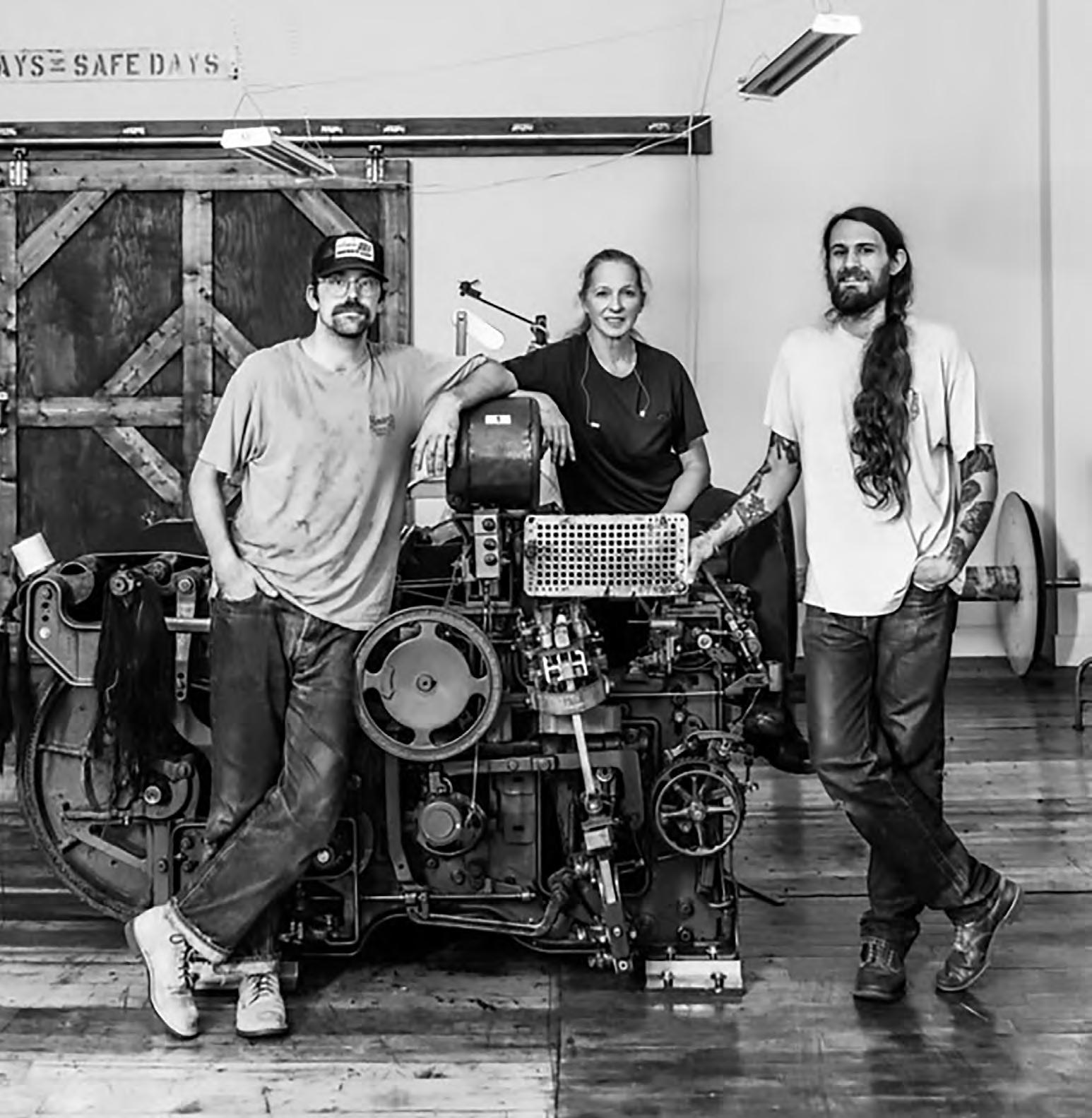
Proximity Manufacturing Company upholds Greensboro, N.C.’s longstanding denim tradition. by Angela Velasquez
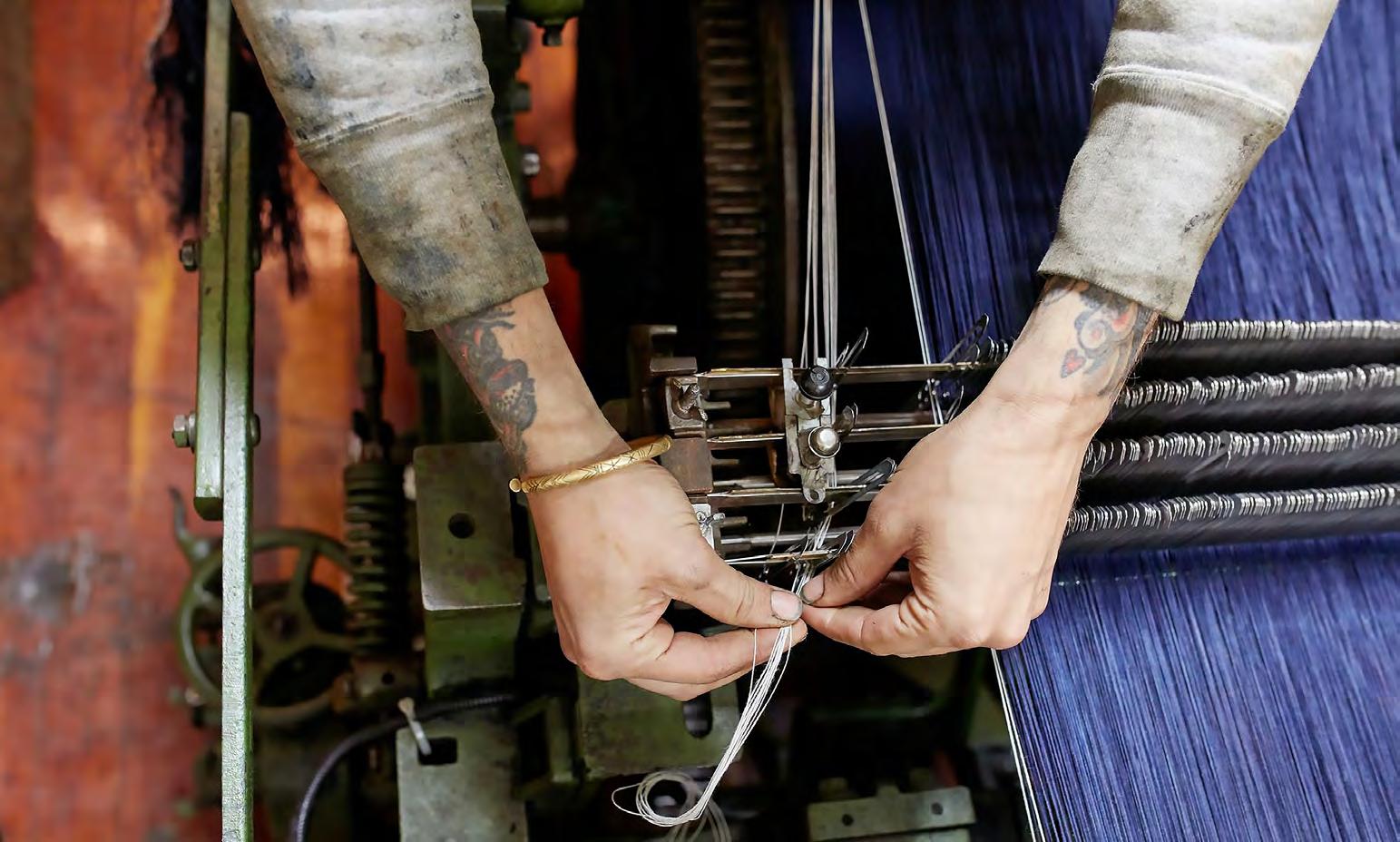
two draper x-3 looms are still chattering in Greensboro, N.C.
Since 2021, Proximity Manufacturing Company has produced limited runs of selvedge denim made on a pair of White Oak’s historic looms inside what was once the plant’s archive room.
Proximity is the for-profit textile manufacturing subsidiary of the White Oak Legacy Foundation (WOLF), a non-profit organization with the mission to preserve the city’s history and heritage of denim and jean manufacturing. Established in 2020, two years after White Oak shut down, the foundation serves as a steward of history and an educational resource for denim professionals.
White Oak and textile manufacturing will always be the heartbeat of Greensboro, said Evan Morrison, the operations manager of Proximity Mfg. and co-founder of Hudson’s Hill, a Greensboro-based general store
that specializes in carrying “Made in USA” products. “I started my entire retail business on the idea that we would be selling other ‘Made in USA’ brands and products, but also making our own using fabric that we could drive over and pick up just on the other side of town. It threw a kink in the pipes when they closed the mill,” he said.
Morrison connected with the new owner of the White Oak property, who agreed to set aside two of the plant’s 46 looms. The rest were acquired by Vidalia Mills in 2019. Morrison, with the support of a neighbor who was the former head of product development at Cone, got the looms up and running in 2021.
Using warp yarn from Mount Vernon Mills in Trion, Ga., Proximity has produced thousands of yards of fabric. Fabrics span 12 oz. to 12.75 oz. left hand twills, right hand twills, broken twills and herringbones. Special projects have included the first bio-
WE’RE SHIPPING IT TO BRANDS THAT ARE TURNING IT INTO THOUSANDS OF GARMENTS AND THAT’S A COOL FEELING.”
Evan Morrison, Proximity Mfg.
based indigo denim on a selvedge loom in the U.S. as well as the first denim woven with U.S.grown degummed hemp.
H A small team maintains the heritage
G Proximity partners with brands to develop specialty fabrics.
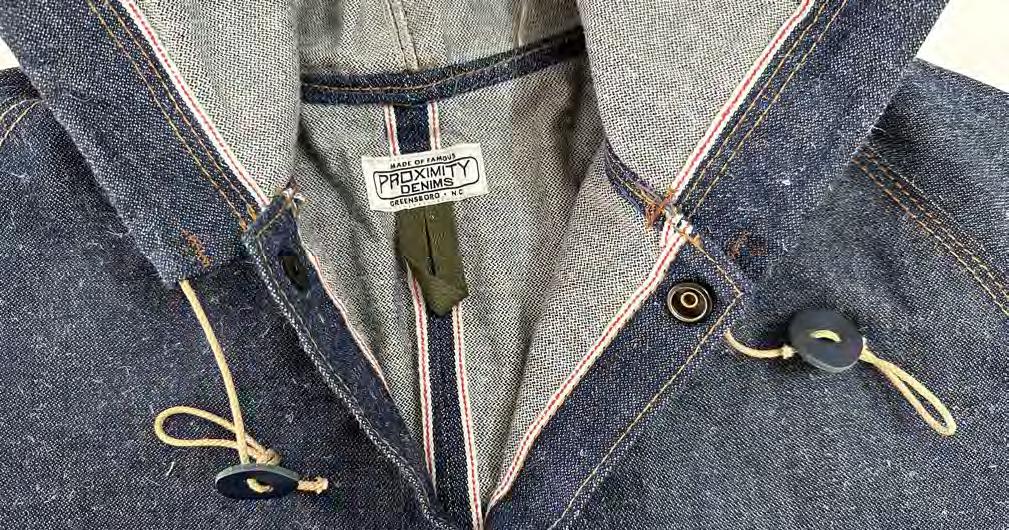
“We’ve shipped pallets of denim, which is kind of surreal because there’s only two of us,” Morrison said. “We’re shipping it to brands that are turning it into thousands of garments and that’s a cool feeling.”
First Standard NYC, Opie Way Footwear and Runabout Goods have used Proximity’s fabric for special products. At $30 a yard, the fabric is not for mass consumption. However, Proximity doesn’t follow a traditional capitalist business model. Instead, Morrison said the true value of what Proximity does lies less in the weaving itself and far more in the educational impact the company can make.
The business plays an important role in WOLF’s Denim 101 courses held twice yearly.
Over 200 students have attended the two-day deep dives into denim manufacturing, including senior employees at major U.S. denim brands who have never visited a denim mill. “There’s so much to unpack,” Morrison said. He should know. In his role at Proximity, Morrison serves as the weaver, loom repairman, payroll manager, shipping person and quality control inspector. “It might be insane to wear all the hats, but it is extremely valuable for our city’s sake, because it keeps our tradition of making denim going for a third consecutive century,” he said. “We’re kind of the caretakers of this knowledge. You can’t take it with you, but you can hold onto it for a little longer.”
E Fabrics use warp yarn from Mount Vernon.
looms.
AMERICAN
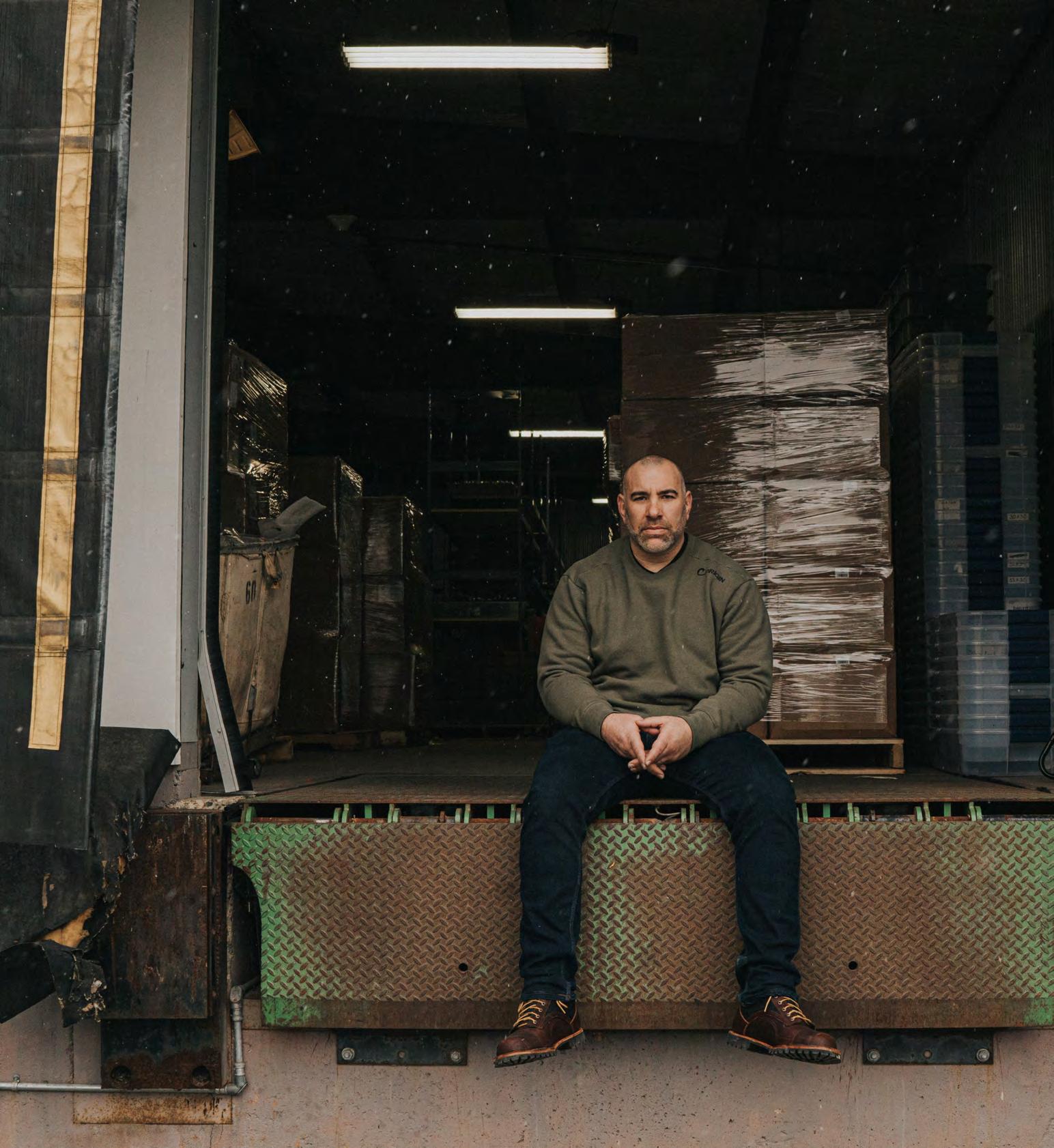
Origin USA founder Pete Roberts gives a candid look at what it takes to build a Made in USA movement. by Angela Velasquez
AMERICAN DREAM
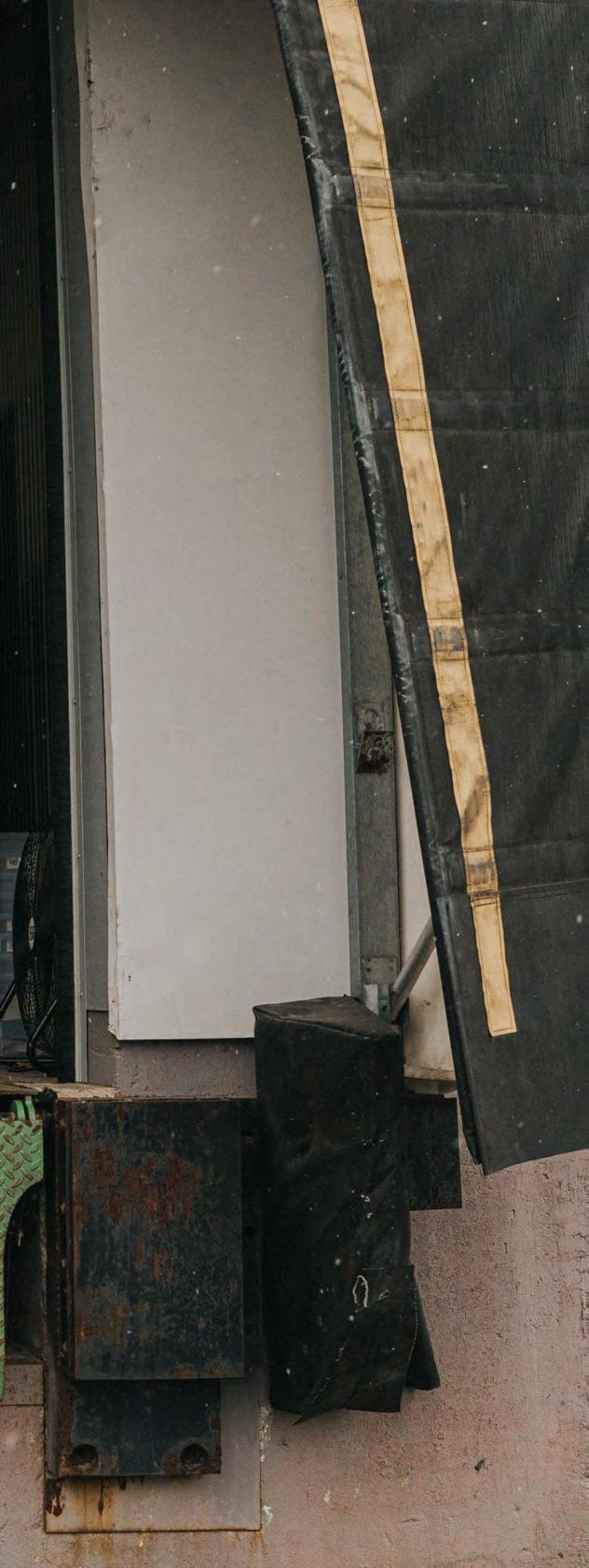
in a time when globalization and fast fashion dominate the apparel industry, one New England manufacturer is rewriting the script. Since launching Origin USA in 2011, Pete Roberts has made it his mission to bring denim manufacturing back to American soil—not as a niche craft, but at scale, and with purpose. Rooted in the belief that manufacturing can provide both economic vitality and personal fulfillment, Roberts and his business partner Jocko Willink are building an apparel and footwear brand that prioritizes local supply chains, environmental impact and quality craftsmanship. c Origin employs more than 300 people across three factories in Maine and North Carolina. The brand produces T-shirts, outerwear, technical bottoms, performance apparel, jiu-jitsu gear, footwear, accessories and more. In 2019, Origin launched its first jean. Denim now accounts for a quarter of the company’s business. On Black Friday 2024, Origin generated $6 million in sales and shipped 30,000 pairs of jeans—more than the brand’s total annual sales in 2019. c “It’s been a real process, because we’ve done everything from scratch with no funding,” Roberts said. “But it’s been a fun journey.”
c In this interview, Roberts discusses the challenges and rewards of producing domestically, the knowledge gaps his team has worked to close, and the longterm vision for creating an enduring, “build by freedom” legacy.
H Pete Roberts, Origin USA founder.

From a business perspective, what advantages have you seen from keeping manufacturing domestic?
Pete Roberts: I think there are multiple advantage to keeping it domestic. Number one is purpose. Jobs are important, especially in my community. In New England there are towns that were built around factories and now a lot are empty. It’s giving people purpose if they decide that they don’t want to go to college to become accountants and programmers. I look at manufacturing as a trade and there are a lot of people that want to do it. We have an obligation to support our communities. Additionally, keeping everything on a local supply chain is [sustainable]. There’s also so much economic prosperity throughout the supply chain that can be had. For me, localization is a very big thing. It’s important to know you’re having a positive impact on the environment and people. And you can better control manufacturing when you know where things are coming from. I know the people I’m working with; we’re friends. I can control the product and the quality product well and I can be anywhere in a few hours if I need to be. That’s also important.
Has manufacturing denim in the U.S. become easier or more difficult since you’ve started in 2011?
PR: It’s become easier because there’s more knowledge. When I started, especially in my part of New England, there was no knowledge left. There were a couple of old timers who had a little bit of knowledge and helped me. But as we’ve grown, we’ve rediscovered the knowledge and have pass it on to our team. There’s redundancy in our knowledge base. When you have one person with all the
knowledge, you have a single point of failure. When you have 300 people with a shared consciousness, a shared knowledge, you can be craftier, and things don’t take as long as they used to. It used to take forever to do something, because we were figuring it out. Now we can develop things and do new things, and we have the skills to make them happen.
Is training a workforce difficult?
PR: You’d think it would be hard to train people, but we have a lot of young people. I look at it as a trade and a skill set. I’m not just training somebody on one thing. They’re not just pressing a button and pulling a levee. They’re crafting, they’re moving between machines, and they got to know how to do this and that and the other thing… as they learn and get better, it becomes more fulfilling for them. People intrinsically want to do a good job.
What have been the biggest challenges in producing denim domestically? How have you overcome this challenge?
PR: The hardest part was making the garment again. I wanted to bring [denim manufacturing] back but not in a bespoke way. I didn’t want to cut one pair of jeans. I wanted to bring it back in a scalable way. But trying to jump into scale immediately was difficult. We had to learn about leg twist and shrinkage on different batches and quality. There was just so much that we couldn’t see at face value until we got to the garment. It’s not just being able to create the garment one time—it’s being able to create it a million times and make making sure it’s consistent every time. That was hard. There was a huge knowledge gap in being able to make that happen.
THE MARKET IS THERE; NOW IT’S CONVINCING CONSUMERS TO SPEND MONEY ON THE RIGHT THINGS.”
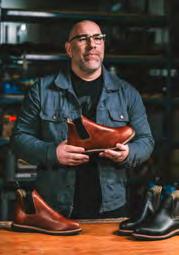
E Origin recently launched 100 percent American-made Chelsea boots.
E E Roberts relied on former Wrangler pattern makers to fine-tune Origin’s first denim designs.
How did you overcome that challenge?
PR: We made a lot of tuition payments. We couldn’t sell the first 500 pairs of jeans. We donated a lot of them. Then I met a couple of pattern makers from Wrangler, and they went through the whole process. They learned from old timers that used to work for Wrangler and filled in the knowledge gaps we were missing. They re-engineered our patterns, created processes around what happens when the fabric comes in like inspection points and tolerances. I needed skilled people to help us on that part of the business.
Do you find U.S. denim production to be limited in terms of capabilities or variety?
PR: It’s all very challenging. We make a super stretch denim. We’re making a 100 percent cotton heavyweight denim this fall and then next year we’re going to start selvedge denim. Making selvedge denim at scale in American is obviously hard. Each one is a challenge, but we’ve built a process around being able to do it. We don’t skip steps. If you skip steps, it’s disastrous… But once you got it and you have talented people, and the knowledge is shared, you can make any style, whether it’s a relaxed or tapered or boot cut.
Does the U.S. government play a meaningful role in supporting domestic production for apparel? Is there enough incentivization for small businesses to produce Made in U.S. jeans?
PR: No, not even close. The U.S. government, historically, is concerned about national security and manufacturing. When you’re talking about footwear and apparel manufacturing, the original purpose was to outfit America’s military and that is the reason we still have the remaining fabric mills and factories. For the most part, they are supporting the federal government. They are maintaining the knowledge needed to make garments and footwear that fit the U.S. military’s needs. That’s the focus of the U.S. government. The focus has not been because manufacturing in America is the right thing to do. It’s the right thing to do from a fossil fuel perspective. It’s the right thing to do from an economic perspective.
How do you anticipate current or future trade policies impacting your business operations and supply chain?
PR: It’s a good question, because it’s not what you would think, right? I would say, for the most part, no. But the one caveat to that is, if there’s more demand for U.S. apparel manufacturing prices will go up because more people want to make it here. We saw during covid with lumber—when demand increased, lumber prices soared. It won’t affect us tremendously, because we weave some of our own fabric. We cut and sew in our own factories. Raw materials might go up in price if there’s more demand, but I don’t think too much.
Do you work with any garment factories outside of your own?
PR: We make everything. We have overflow shops that help us on hoodies and T shirts, but when it comes to things like blue jeans, jiu-jitsu gis and footwear, we don’t subcontract
that stuff. We have a footwear factory in Maine where we make shoes from scratch with U.S.sourced components. Those hard to make goods, we do it all in house.
What are your long-term goals for growing or evolving your domestic production?
PR: To build America’s next big brand, but 100 percent on American supply chain. That’s the 100-year plan. People think I’m crazy because I call it 100-year plan, but it will transcend me. I’ll be gone by the time it’s realized. We’re going to go slow to speed up. We don’t need to go eat tons of market share tomorrow, because we’re never going to go public and we’re never going to sell the private equity or venture capital. We’ll maintain the business structure the way it is.
Origin produces a lot more than jean. What categories do you see the most growth potential?
PR: I think it’s less about growth potential and more about market size. The market will always grow, especially in blue jeans. People are always buying apparel. When I look at what has happened in footwear and apparel with Shein and Temu—all these cheap and cheerful goods coming across the ocean—it’s really disheartening, because the American consumer continues to be convinced that this is the way to buy more. And what we’re trying to say is, you need to buy less. You just need to buy quality, whether it’s from us or somebody else. The American consumer is consuming more than they ever have. The market is there; now it’s convincing consumers to spend money on the right things. If they’re looking for dopamine from a $12 flannel from Temu, that’s one thing. But if they’re looking for long term fulfillment that’s where we can pull on their heartstrings a little bit. That’s the goal.
Do consumers actively seek out ‘Made in USA’ products? Is that what draws them to the brand?
WE DON’T NEED TO GO EAT TONS OF MARKET SHARE TOMORROW, BECAUSE WE’RE NEVER GOING TO GO PUBLIC AND WE’RE NEVER GOING TO SELL THE PRIVATE EQUITY OR VENTURE CAPITAL.”
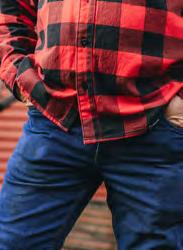
G Jeans are made in a companyowned factory in North Carolina.
PR: Those early adopters just wanted to support Made in USA. But then they saw we offer variety of product and we’re transparent about where things are made. We’ve showed them soup to nuts everything we’re doing, and customers want to become part of the revival of U.S. manufacturing. But in the beginning, we didn’t have best in class product, right? So, to appeal to customers who want best in class product, good fits and fabrics and function, we had to get better. We had to get better at building product. Now customers see it’s a great product, made in USA, dollars are going back to the community, and they love it. We’re diversifying product categories—that’s the phase we’re in now. We have our heritage goods, training goods, casual goods, and the next step is professional.
What do you have planned for the rest of the year?
PR: We’re releasing our 100 percent cotton jeans in the fall and our first women’s jean, which we’re really excited about. Fiber, labor, rivets, zippers, buttons—100 percent American made. We’ve trademarked the term ‘built by freedom.’ That’s our way of saying ‘American made’ because American made can mean a part of it was made in South America and then it was assembled in the U.S. ‘Built by freedom’ means that every component came from a U.S. supply chain. We’re also expanding our footwear offering. We’re making a really cool bison boat shoe and some sneakers, and more casual goods professional goods. So really excited about this year.
In the current climate, is it challenging to not politicize ‘Made in USA’?
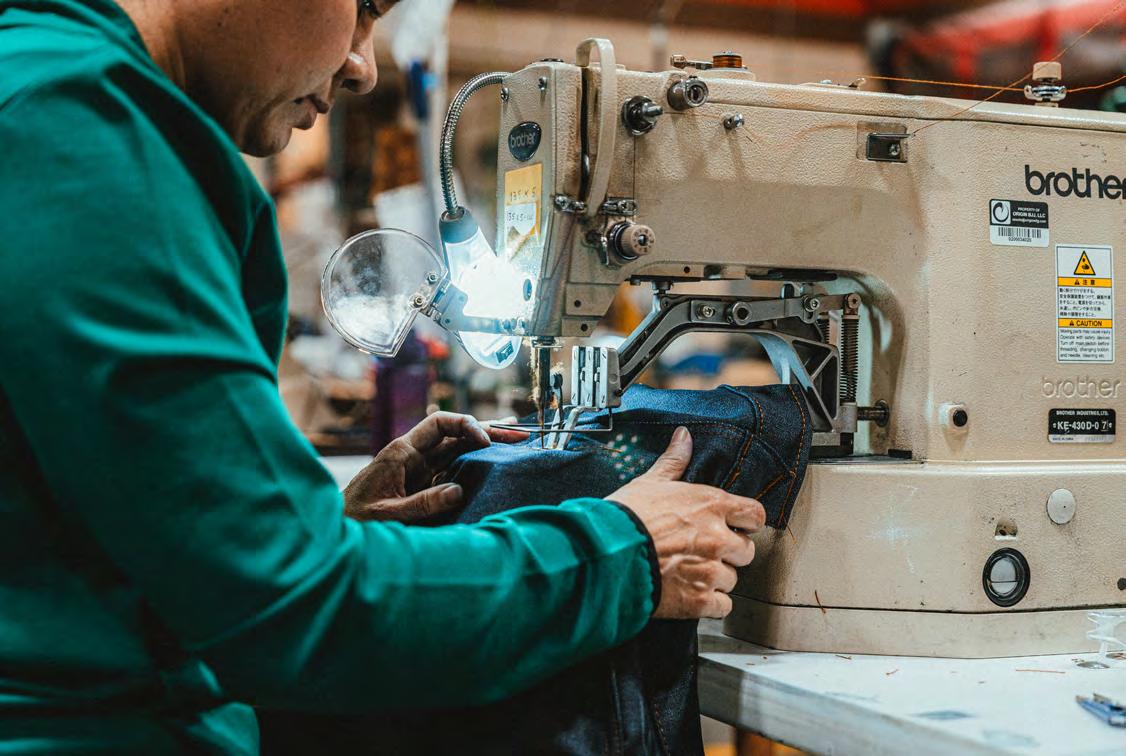
PR: Yes, it’s very difficult, because we’ve been standing on the rooftop for almost a decade and a half now, trying to tell the world what happened to my community and how we’re going to try to fix it. It was very people centric, and purpose driven. It’s like, we need to do this, because if we don’t save this, it will be gone forever. We’ve always been politically agnostic, but now suddenly there is this big Made in USA, push, which I would say a little bit a little bit weaponized, depending on what side of the aisle you stand. But for me, it’s just the right thing to do.
It has been politicized, and maybe that’s okay because it’s getting everybody talking about it. I’d rather everybody be talking about it than not. During covid, everyone wanted to make stuff here and the moment that ended, boom, everything back to foreign countries. Well, now people must talk about it so that’s a good thing. We’ve received less than a handful of comments like, oh, you know, I love Origin, but you guys are getting all political. And I’m like, whoa, what do you mean? We literally haven’t changed our message, but the noise from the outside has convinced you of this. Being100 percent Made in America isn’t a political statement. That’s who we are. That’s our soul.
E Denim accounts for a quarter of Origin’s business.
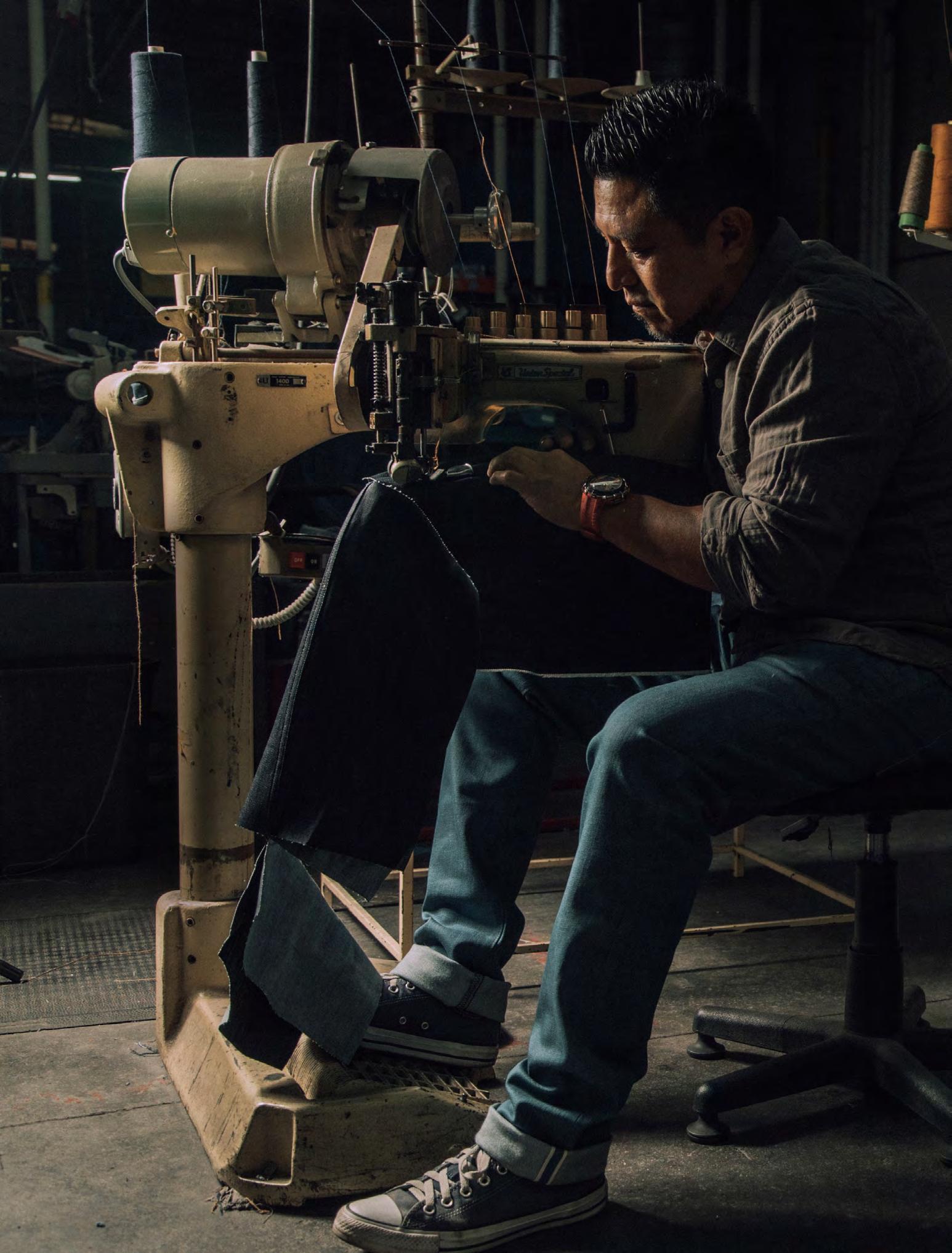
Domestic denim brands face rising costs, labor shortages, and supply chain chaos—

FADED GLORY
yet some refuse to abandon the Made in USA mission. by Angela Velasquez
E Hiroshi Kato opened its L.A. factory in 1991.
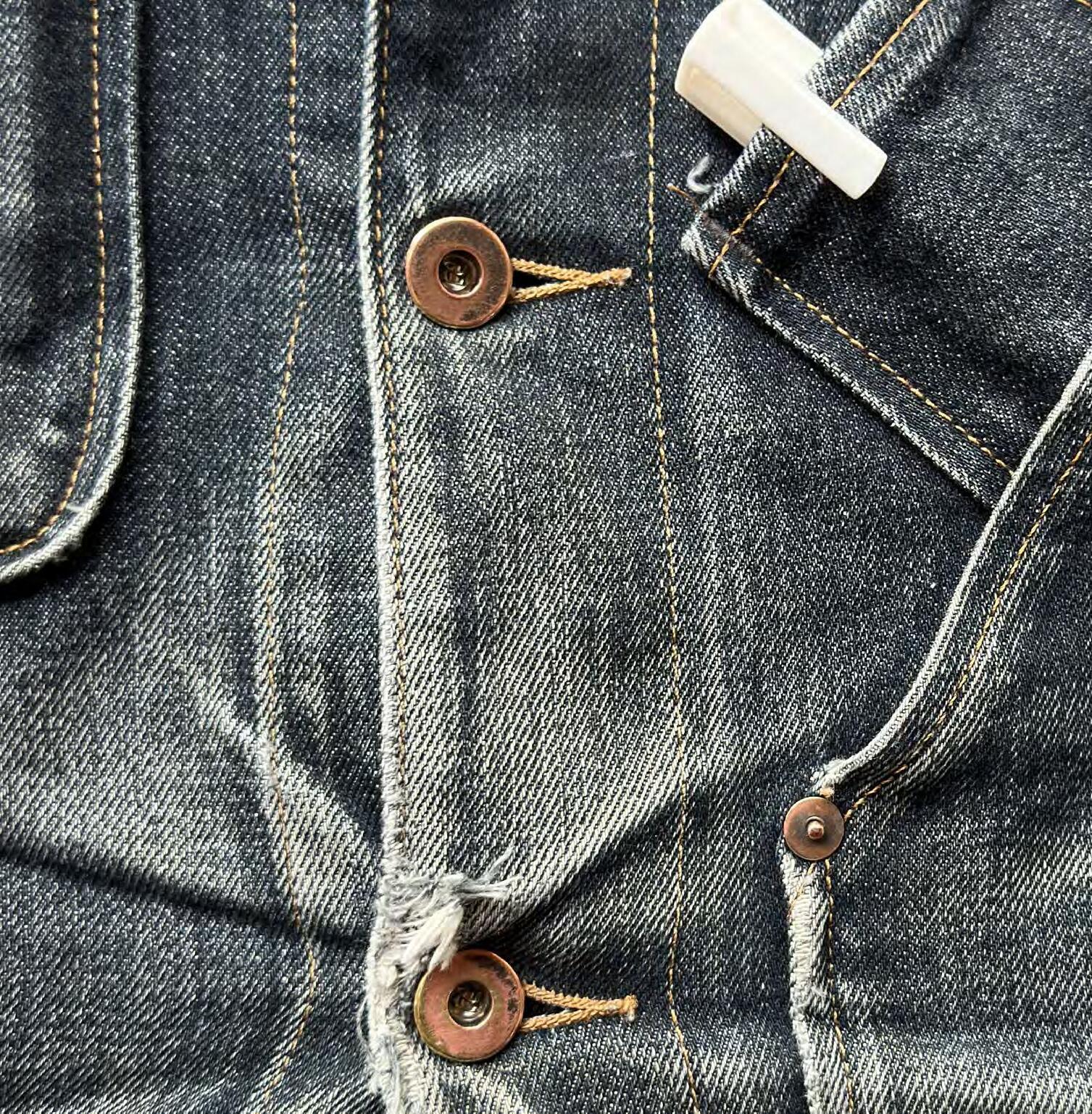
pete searson , co-founder of Tellason, vividly remembers the day his business partner, Tony Patella, received the call from a sales rep. c “He said, ‘Hey, Tony, are you sitting down?’ He literally said that. And Tony goes, ‘You’re going to tell me [White Oak] is closing, aren’t you?’ The rep says, ‘How did you know?’ And Tony was like, how could they not be closing? c Searson and Patella visited the storied Greensboro, N.C.-based mill for its 110th anniversary in 2015. There, they learned that Tellason, the niche “Made in USA” brand they had founded six years prior, was the famous mill’s fourthlargest customer in the entire operation. “And they were proud of it,” Searson said. “We thought we’d be their 40th customer.” c Revered globally for its historic ties to Levi Strauss & Co. and its American Draper X3 selvedge looms, White Oak’s closure after 112 years continues to weigh on the minds of denim heads and entrepreneurs alike.
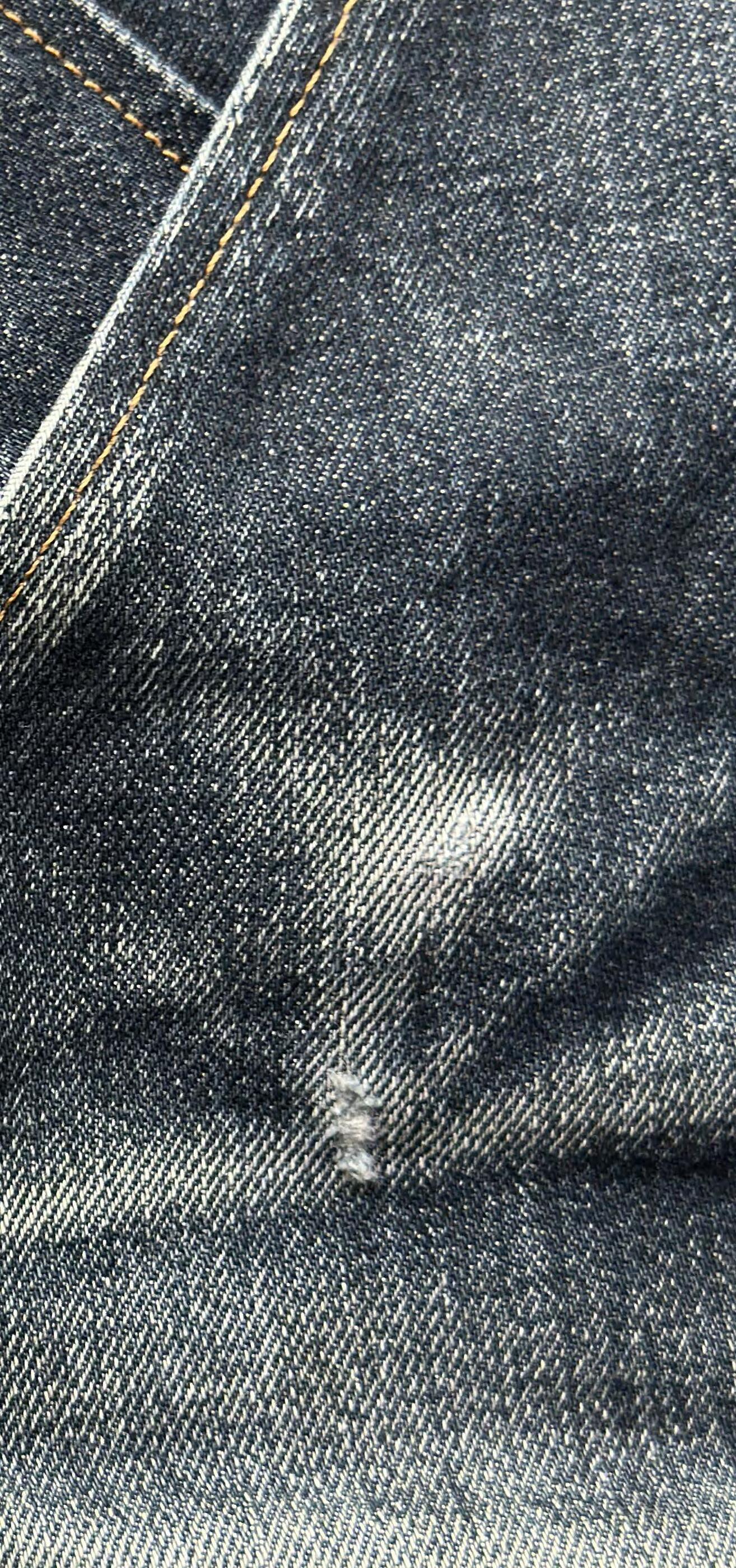
E
Despite being a small client, even at No. 4, Searson said the brand did everything it could on a “cultural and business level” to support White Oak. While larger companies “chased the rainbow to profits by going overseas,” he said Tellason was never tempted by cheaper fabrics from Italy, China or Turkey.
“We committed to our raw materials,” he said. “We certainly could have saved money and been maybe more profitable by buying fabrics from somewhere else, but that would have taken away from the ethos of our brand, which is made in USA, cut and sell in San Francisco, all the way. So, my take is, we did our part. We decided to stay with it, stay the course, because it meant something to us on a cultural level. And denim, in our opinion, is a really special product.”
Tellason purchased a year-and-a-half’s worth of proprietary fabric from White Oak ahead of its closure. The order was the last
WHILE OTHER COUNTRIES HAVE SUBSIDIZED THEIR MANUFACTURING SECTORS FOR DECADES, THIS SECTOR IN THE U.S. HAS FALLEN BEHIND IN CAPACITY, QUALITY AND SKILL.” Dr. Erik Brodt, Ginew
shipment to leave Greensboro. As the Tellason team unloaded the massive order in Oakland, Calif. Patella traveled to Japan to meet with mills about re-creating the unique fabric. Kaihara Denim delivered.
“The first run of samples they came up with based on what we were doing with White Oak was on point. We couldn’t even really tell the difference between White Oak and Kaihara,” Searson said.
WHITE SPACE
While high-quality fabrics are available globally, White Oak’s demise left a significant gap in premium U.S.-made denim and disrupted both the production and purpose of many “Made in USA” brands.
Since launching in 2010, Ginew has produced most of its small-batch collections in L.A., Seattle and Portland, Ore. Up until December 2017, the Native American-owned denim brand sourced all its denim from White Oak.
Following the mill’s closure, Ginew transitioned to sourcing premium fabrics from Nihon Menpu Mills in Japan and Vidalia Mills in Louisiana. The latter ceased operations last fall and is now set to be auctioned off in August to resolve outstanding debts.
Dr. Erik Brodt (Ojibwe), co-founder of Ginew, said the focus has always been to source the highest quality, most interesting fabrics. The task has never been easy in the U.S. While sustainable fibers and technologies has become more accessible, finding highquality U.S.-made fabric grows more challenging with each passing year.
“Manufacturing denim apparel that is made with USA-made denim fabric has become more difficult,” he said. “There are several small mills that make premium denim in the U.S.; however, the cost, quality challenges and limited supply have made it tremendously difficult to source new, premium USA-made denim fabrics.”
While Vidalia, with its promise of valueadded fabrics and selvedge denim made on Draper X3 selvedge looms acquired from White Oak, seemed too good to be true for many insiders in the industry, brands like Ginew and Devil-Dog Dungarees were eager to place orders. Brodt said the mill produced “stunning denims” with intricacies and artisanal elements.
Devil-Dog Dungarees incorporated Vidalia Mills denim into its 75th-anniversary jeans, a limited release that Jeff Rosenstock, DevilDog Dungarees president, said paid tribute to both the brand’s history and the legacy of American-made denim. “As the only mill producing premium selvedge denim on American soil, Vidalia’s craftsmanship and innovation helped preserve an important part of our industry’s heritage. Vidalia represented a rare commitment to domestic textile production, and its closure is a significant loss for the U.S. denim industry,” he said.
Others were more skeptical of the mill housed in a former Fruit of the Loom facility. To be a fully vertical denim mill with in-house spinning requires a right-sized facility and a knowledgeable workforce at each stage of production, not to mention cash. Pete Roberts, the founder and CEO of Origin USA, said Vidalia lacked it all.
F
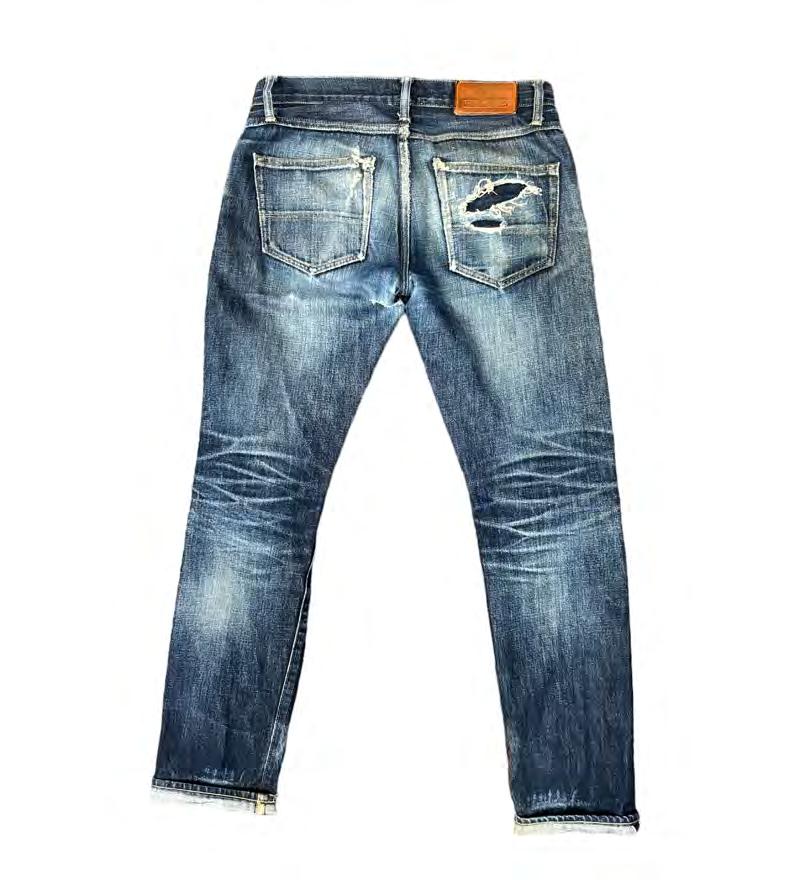
Tellason is committed to producing jeans in San Fransisco.
Selvedge denim, chinos, and fatigue pants are part of Tellason’s collection.


FEWER MILLS ARE PRODUCING IN THE U.S., LIMITING OPTIONS AND ELONGATING THE TIME IT TAKES TO RECEIVE YARDAGE.”
Susie Shaughnessy, Crawford Denim
“There’s a lot that goes into each one of those components, into carding and roving, into spinning, into dying, into weaving. And trying to bring back everything all at once with limited cash, using other people’s money in this massive space… it was kind of a pipe dream,” Roberts said.
“It’s unfortunate for brand owners like me and the apparel industry at large in the United States, but hopefully there’s some lessons learned, and hopefully other people can pick up and push the ball a little further,” said Patrick Mate, founder and owner of Patriot Jean Co.
Godmother NYC Inc. founder and CEO Christine Rucci helps brands like Patriot Jean Co. build specialized supply chains around their design concept, price and finishing. She had “high hopes” that Vidalia would become a fully vertical supply chain factory for large- and small-scale full package production. “It seems companies would rather shut down than invest in factories here. I have worked with so many of them for over 40 years and there are none left in the Southeast. Or they’ve shifted from jeans to government contracts to keep the lights on and people employed,” she said.
COST CONSIDERATIONS
Producing jeans domestically offers key advantages—such as speed-to-market, quality control, and the flexibility to adapt designs to shifting demand—but these benefits come at a growing cost, driven by limited manufacturing capacity and tariffs introduced during the Trump administration.
“The single greatest challenge to producing denim apparel domestically is cost,” Brodt said.
Not only has it become more difficult for Ginew to obtain premium fabrics, but the cost of cut-and-sew has increased exponentially since 2017. And the market, while proud of “Made in USA” items, is not willing to pay the necessary end prices for clothing made domestically, he said.
Despite being a small customer, Crawford Denim has provided consistent business to its U.S. factory partners for 12 years, even during the ups and downs of covid. Founder Susie Shaughnessy chooses to buy deadstock denim and overstock fabrics from L.A. rag houses for her small batch brand. The strategy prevents fabrics from ending up in landfills and helps fill the material void left by the great exodus of U.S. mills.
“The biggest challenge is sourcing denim domestically,” Shaughnessy said. “Fewer mills are producing in the U.S., limiting options and elongating the time it takes to receive yardage. Ordering from North America and overseas suppliers is harder by the day.”
She added that the instability with current tariffs is driving brands and suppliers to increase their pricing because no one knows what costs will be levied against them when suppliers deliver.
Rucci’s greatest hurdle now is tariffs on imported fabrics. A $5 per yard fabric from China becomes $18 per yard with duty, tariffs and shipping, she said. On average, a jean requires 1.5 yards, which means it costs $27 for fabric alone. With a general CMT (cut, make, trim) of $35 for a minimum order of 1,000 units, plus $5 for trims and $20 for washes, the jean costs $78 right out of the factory, and that’s not factoring shipping and other logistical fees.
Rucci said only direct-to-consumer brands can work with this costing, and those companies are often challenged by MOQ (minimum order quantity) and price, especially niche startups pursuing domestic manufacturing. Rucci’s solution is to group together small brands and to encourage them to share raw materials when possible. “I can set up a line with one color thread and sew three brands in one place,” she said.
Rucci has embarked on a sourcing journey in the Americas, currently sourcing denim from mills like Cone Denim in Mexico and cutting and sewing in the U.S. Her clients are mostly smaller brands like Raimundo Langlois, MarkWest Denim, Ginger + Dandelion and Corby Holbrook, all of which are making jeans in L.A. for their direct-to-consumer businesses.
Patriot Jeans Co. is her only client using 100 percent “Made in USA” components—from buttons to tissue paper—and manufacturing in El Paso, Tex. The men’s brand sources fabric from Mount Vernon in Trion, Ga., the only denim manufacturer in the U.S., and supplier to brands like Imogene + Willie and Origin USA.
Fabrics are not the only issue either. Rucci said most American trim manufacturers want 10,000 to 20,000 for custom trims and they’re not always willing to do smaller quantities even with an upcharge. She must source certain trims outside the U.S. for that reason.
“There are also many suppliers who stock imported fabrics and trims which are U.S.based, which I consider U.S.-sourced,” she said.
Rucci’s core U.S. suppliers are YKK, A&E Thread, Carr Textiles, Copen United and American Made Knitters. She uses Caroda, a New York City-based factory, for raw denim programs. For bigger volumes with lower retail costs, she works a factory in El Paso for sewing and laundry. For larger volumes, she turns to factories in Mexico. Her network in L.A. includes American Made, Star Fades and Cotton Cloob.
Since the Maquiladora Program in the 1960s, which allowed U.S. companies to set up manufacturing plants in Mexico, and later NAFTA in 1994, Rucci said “Made in Mexico” is widely accepted in the U.S. jeans sphere— though Rucci prefers to use the term “Made in North America.”
“I worked for two years for a large Mexican jeans manufacturer, and they make for all the top American brands, which all had their own staff and offices within the factory,” she said
BLURRING BORDERS
According to the FTC, for a product to be called “Made in USA” it must be “all or virtually all” made in the U.S, meaning the final assembly or processing of the product occurs in the U.S., all significant processing that goes into the product occurs in the U.S., and all or virtually all ingredients or components of the product are made and sourced in the U.S.
If brands can’t produce a garment that meets the strict criteria for a 100 percent “Made in USA” label, should they abandon domestic production altogether? It’s a
H Ginew is the first Native Americanowned denim brand.
IT SEEMS COMPANIES WOULD RATHER SHUT DOWN THAN INVEST IN FACTORIES HERE.”
Christine Rucci, Godmother NYC Inc.
pressing question for companies and organizations striving to scale and support U.S. manufacturing.
Stephen Lamar, president and CEO of AAFA, said the strict standards for using the unqualified “Made in USA” label— requiring nearly the entire supply chain to be domestic—can discourage U.S. production. Many manufacturers are unwilling to invest in partial domestic operations if they can’t fully meet the criteria, especially since they can’t charge premium prices for products labeled with qualifiers like “Made in USA of imported materials.”
As a result, he said the all-or-nothing nature of the labeling system can undermine its intended purpose of encouraging domestic manufacturing.
In the denim sector, many brands that manufacture in Los Angeles embrace “Made in L.A.” as their signature identity.
Hiroshi Kato opened its fully vertical factory in L.A. in 1991 and debuted its brand in 2013. Cut, sew, wash, and finishing all take place in L.A., where the company recently launched a new water recycling plant and a solar power system. “We aim to recycle 75-85 percent of the water used in processing jeans and return them to the factory. Additionally, more than 90 percent of the electricity used will be self-generated,” said Muneyuki Ishii, founder of Hiroshi Kato.
The brand’s signature 4-way stretch selvedge fabric—used in popular styles like the Pen Slim and Hammer Straight—is sourced from Japan, but Hiroshi Kato remains committed to preserving its strong American roots.
“Jeans were born in the U.S. Throughout the history and evolution of jeans, the value of jeans
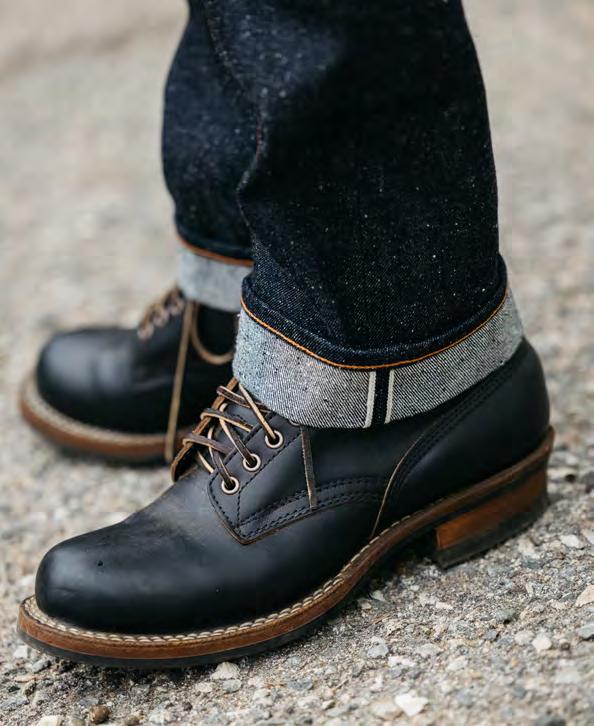
made in the U.S. has consistently remained significant and will continue to do so in the future,” Ishii said. “Every aspect of our process, from design and manufacturing to marketing, is based in the U.S., incorporating cultural evolutions into our American-made jeans.”
However, without the factory Ishii said producing jeans in the U.S. would be nearly impossible. “Many factories in L.A. have ceased operations, making business challenging for us. We adapted by redesigning our supply chain and incorporating in-house operations to become fully vertical,” he said.
Despite the growing challenges of U.S. jeans production, commitment can help overcome these obstacles. “Adopting advanced technologies and innovative business models is essential rather than repeating old methods,” he added.
Searson isn’t looking to shake things up anytime soon. By sourcing premium Japanese fabrics at fair prices and crafting garments in San Francisco’s last remaining factory, Tellason maintains a steady approach, honoring tradition while embracing necessary change.
“Now, if the factory we use closes, we’ll have to go somewhere else. That’s life. We’re big boys,” he said. “We can handle it, and we will pivot when needed, just as we did from White Oak to Kaihara. But if the green light is on at our factory in San Francisco, we will continue to make there. If the prices need to go up, we understand that, and we won’t bark about it.”
DEMAND VS. SUPPLY
Though Rucci applauds brands that want to make “Made in USA” jeans, the industry vet warns of setbacks, adding that the “sad truth” is the industry is lacking in every aspect imaginable, from machinery and garment wet processing to skilled sewers.
A persistent lack of skilled labor, especially in sewing, is one of the industry’s biggest issues, Lamar said. As companies consolidated factories due to labor shortages, they eventually closed facilities. Workers left for better-paying or more appealing jobs in other industries, like automotive or tech. Rebuilding the U.S. workforce would require textile and apparel companies to offer stronger incentives and rethink the image of factory work, especially the perception of spending eight hours a day at a sewing machine.
“As a country, we should not be reliant on other nations for our goods. Apparel can be made quickly, ethically and reasonably priced in the U.S.,” Shaughnessy said.
In her experience working for U.S denim brands both domestically and overseas, Shaughnessy said there’s a need for both, but that it must be recalibrated. Though she’s encouraged by a resurgence of small batch sewers using vintage machines, business has tipped too far to imported consumer goods, impacting a knowledgeable workforce in the U.S. and artisans who view apparel manufacturing as an art form.
“Having designed for larger brands while they still had domestic production, I know they can return to it,” she said. “We need to give consumers high-quality and abundant options to choose from.”
Even as major brands continue to offshore production to reduce costs, smaller companies still face a David-versus-Goliath struggle when trying to access U.S. manufacturers. Rucci said big brands are starting to approach L.A. factories, laundries and dyehouses with 10,000-20,000 units and she fears smaller brands will be dropped due to cost and
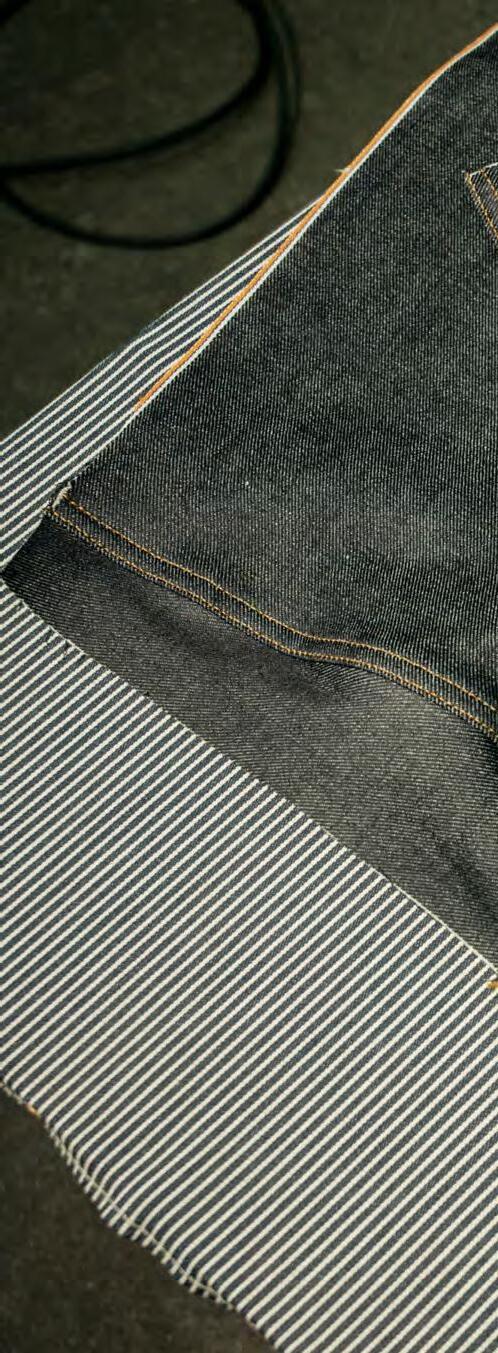
margins. To make matters worse, she noted that many large companies are turning to U.S. or L.A. manufacturing merely as a temporary marketing tactic, rather than as part of a longterm sourcing strategy.
“I have seen it happen repeatedly,” Rucci said. “It’s also hard on smaller brand owners because they’re often self-financed and don’t have steady monthly jeans production. Most of the factories bring in workers based on volume.”
On top of that, she said ICE raids in L.A. are making it more difficult to secure a workforce. “As many garment workers are immigrants, some workers are fearful to come to work. Just as we are promoting ‘Made in USA,’ the U.S. government is cracking down on the very skilled labor force we need to make here,” she said.
GOVERNMENT SUPPORT
As if convincing U.S. consumers to spend more on domestically made products weren’t already difficult—especially in a time of tightened budgets—brands now face an added challenge: the nation’s deteriorating global reputation.
G Hiroshi Kato’s key fabric is a 4-way selvedge from Japan.
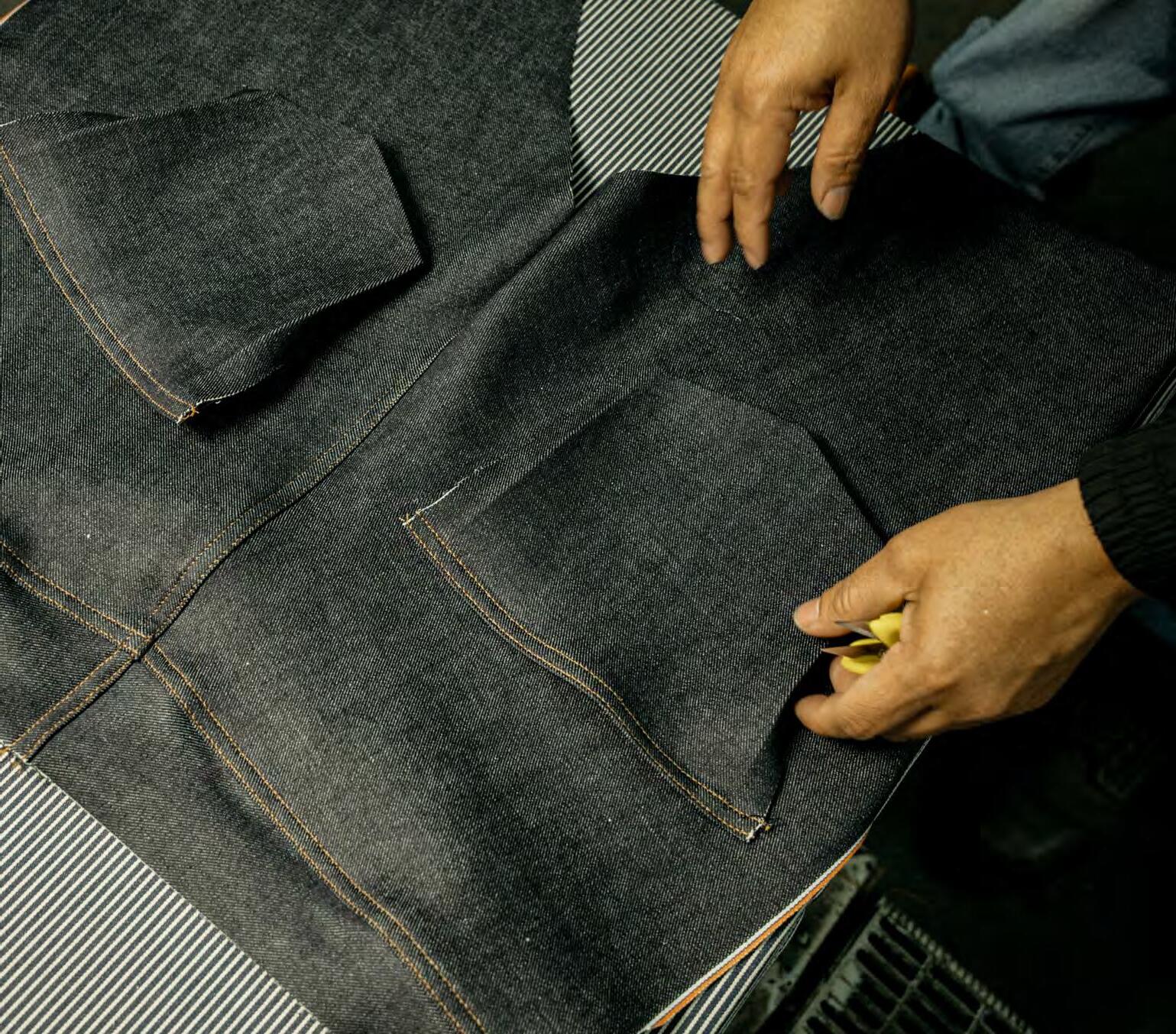
Shaughnessy said overseas customers are turning away from U.S. products, both in protest of the current administration and the costs.
Outside of the U.S., Brodt said the recent trade disputes have resulted in a geopolitical shift away from “Made in USA” with some blocs boycotting American items. “This has definitely been difficult for our business as international order cancellations are far outpacing new domestic orders,” he said.
Compared to other countries, Brodt said federal and state governments can do more to support U.S. textile and garment manufacturing.
“While other countries have subsidized their manufacturing sectors for decades, this sector in the U.S. has fallen behind in capacity, quality and skill. I think it is a critical time to evaluate the role of both federal and state governments in supporting USA manufacturing, to be able to compete at the cost, scale and quality of offshore and nearshore factories,” he said.
The government at all levels can help in a variety of ways. At the state and city level, offering tax incentives in specifically zoned
manufacturing areas could be a highly effective strategy. Shaughnessy noted that organizations like SF Made in the Bay Area play a crucial role by helping brands access more affordable manufacturing facilities. She pointed out that investing in local businesses not only supports entrepreneurs but benefits the broader community by keeping spending and economic activity circulating locally.
At the federal level, Shaughnessy emphasized the urgent need to eliminate inconsistent tariffs. “They have been proven historically to be ineffectual and have driven up the everyday consumer’s cost of goods,” she said. “Incentives to larger American brands to offer U.S.-made product will also work, if the companies work at a different profit margin. There are largescale manufacturers that work with the U.S. military that can accommodate larger orders for these big brands.”
However, without decisive policy changes, Shaughnessy fears the outlook will continue to worsen. She suspects more brands, businesses, and suppliers will fold if government officials fail to acknowledge the impact of President
Trump’s tariff policies and their frequent, unpredictable revisions. “It is economically challenging not to know what your duties and tariffs will be day to day,” she said.
Brodt echoed these concerns, warning that small apparel businesses may become the unintended casualties of the current global trade environment. “We anticipate that supply chain disruptions will continue,” he added.
Pearson was even more direct, challenging the assumption that domestic denim manufacturing can be revived through tariffs alone. “You’re not just going to whip up a factory, are you? The idea of bringing denim manufacturing back to America by imposing tariffs—it’s not true. No one will open a factory to make denim again. It’s way too technical,” he said.
Instead, he argued, the policies are actively undermining companies committed to U.S. production. “Why punish us for buying from Japan? I can understand if there was a solid mill, but we would have never gone to Japan because we like the USA story. It doesn’t exist. This broad stroke of tariffing everything— that’s a mistake,” he said.
E Hiroshi Kato recently updated its L.A. factory with a new water recycling plant.
GROWING PAINS
Will Trump-sanctioned ICE raids stunt regenerative agriculture’s growth?
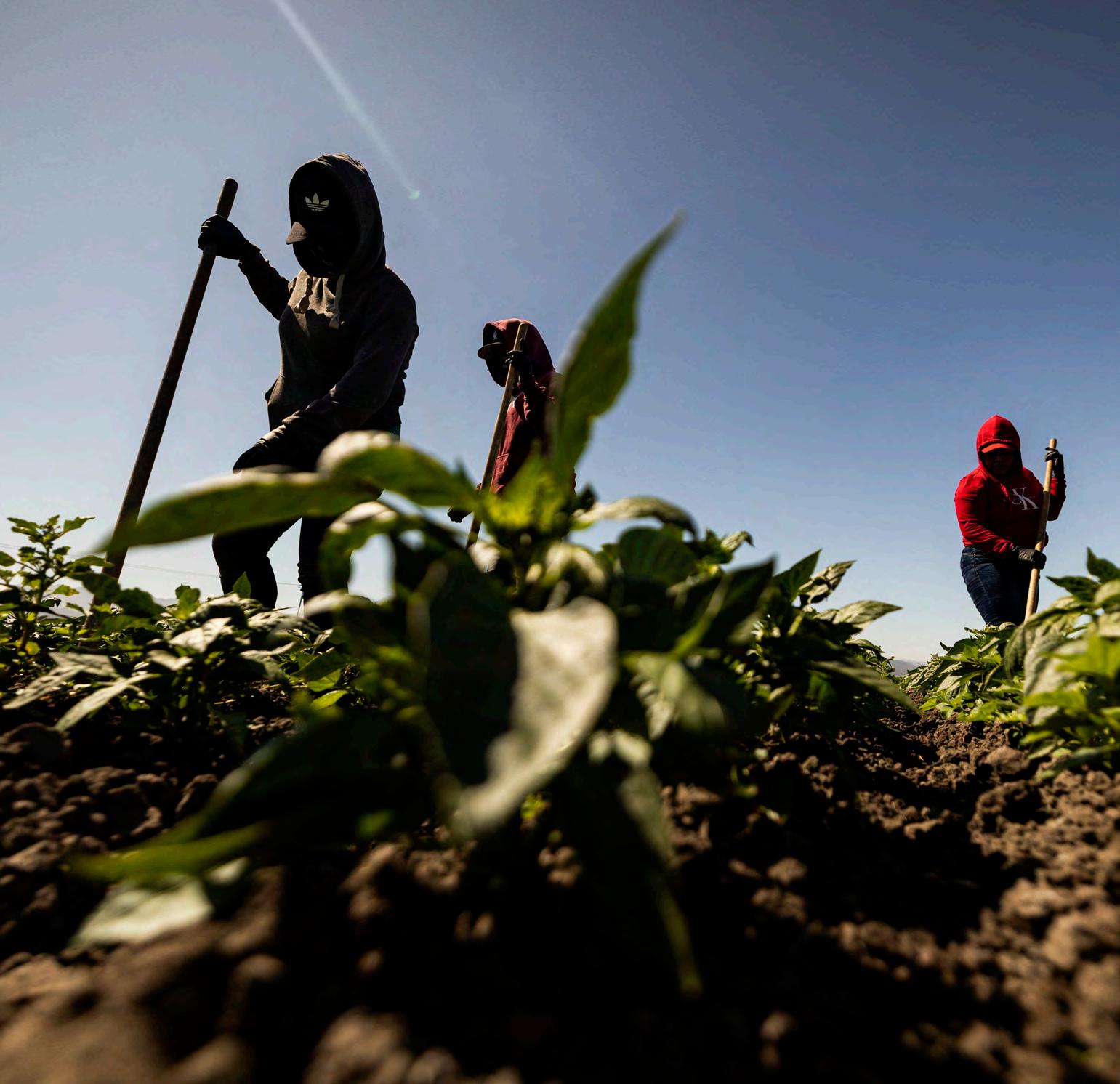
by Andre Claudio
president donald trump’s increased U.S. Immigration and Customs Enforcement (aka ICE) raids are poised to have a broader impact than initially anticipated. c In just six months back in office, Trump has drastically reshaped the political landscape. Among the most controversial moves from the 79-yearold leader is the ramp-up of deportation policies and the intensified presence of ICE, a shift already sowing fear across industries dependent on immigrant labor and threatening the stability of key supply chains. c “We’re seeing policy whiplash that’s creating operational chaos,” Loren Locke, a business immigration attorney and former U.S. Department of State consular officer, told Sourcing Journal. “This instability makes it impossible for businesses to plan long-term investments or really changes of any kind.” c While Trump insists his crackdown is focused on “criminals,” the numbers tell a different story. According to a CNN analysis of ICE records from October through the end of May, more than 75 percent of those booked into ICE custody during fiscal year 2025 had no criminal convictions beyond immigration or traffic-related offenses. Fewer than 10 percent were convicted of serious crimes such as murder, assault, robbery or rape, undermining Trump’s repeated claim that ICE’s efforts are about public safety.

Adding insult to injury, ICE—operating under Trump’s direction—has started heavily targeting undocumented immigrants working in essential sectors like agriculture, hospitality and food service. Although Trump had briefly ordered ICE to halt arrests, enforcement operations resumed shortly afterward.
“The President has been incredibly clear. There will be no safe spaces for industries who harbor violent criminals or purposely try to undermine ICE’s efforts,”
Tricia McLaughlin, a spokeswoman for the Department of Homeland Security, told CBS News. “Worksite enforcement remains a cornerstone of our efforts to safeguard public safety, national security and economic stability. These operations target illegal employment networks that undermine American workers, destabilize labor markets and expose critical infrastructure to exploitation.”
With ICE raids back in full swing, the fashion industry—along with many others—is likely to feel the ripple effects, particularly when it comes to the growth of regenerative agriculture.
In recent years, fashion brands like Patagonia, Kering, Citizens of Humanity and Eileen Fisher have integrated regenerative practices into their supply chains to boost sustainability. These efforts involve reducing chemical inputs, minimizing tillage and improving soil health, cornerstones of the industry’s push toward a more sustainable future.
However, as ICE continues to target farmworkers—and with an estimated 283,000 undocumented immigrants employed in agriculture, according to the Center for Migration Studies of New York— the future growth of regenerative agriculture remains uncertain.
“Unlike conventional farming operations that rely more on mechanization than manpower, the sustainable methods used in regenerative cotton operations benefit from the farmworkers’ special expertise,” Locke said. “Immigration enforcement actions could drive away experienced farmworkers and could do so at points in the cotton season that are particularly devastating to the outcome. It is just unrealistic to think that farmers could replace their current farmworkers on the fly with willing U.S. workers with adequate skill.”
Better Cotton—the world’s largest cotton sustainability program, which operates in 22 countries including the U.S. and accounts for 22 percent of global cotton production— echoed Locke’s sentiment, but noted that the

IT IS JUST UNREALISTIC TO THINK THAT FARMERS COULD REPLACE THEIR CURRENT FARMWORKERS ON THE FLY WITH WILLING U.S. WORKERS WITH ADEQUATE SKILL.”
E Protests against ICE continue to break out across the U.S.
H Most U.S. cotton farms rely on foreign nationals for labor.
fallout will likely have a “relatively low impact on the U.S. cotton sector [which is ranked as the fourth-largest producer worldwide, according to Mordor Intelligence] when compared to other commodities like fruit, vegetables and dairy.”
A representative from Better Cotton added that most U.S. cotton farms now rely on foreign nationals who come to the U.S. temporarily to perform seasonal agricultural labor, aka H-2A workers. Through this program, farms are able to meet labor demands while maintaining protections for U.S. workers’ wages and working conditions.
Still, it’s far from a permanent solution. According to the U.S. Department of Agriculture, H-2A workers are not allowed to stay for longer than one year, and the approval process can take up to three months, posing additional logistical challenges.
“Whether they have current U.S. work authorization or not, individuals employed in agriculture—including those on H-2A visas— retain significant legal protections under federal law,” Locke said. “But ICE raids can create a climate of fear that effectively nullifies these protections, as many become too afraid to report violations or assert their rights.”
Javier Palomarez, founder and CEO of the United States Hispanic Business Council (USHBC), warned that a decline in domestically produced cotton could also force the U.S. to look to international suppliers like India, Brazil, Mexico and Australia, all of which are facing tariffs under Trump’s revived trade policy and “further complicate brands’ ability to secure sustainable fiber.”
“If ICE crackdowns intensify and deter or remove large numbers of farm workers, fashion brands that have committed to sustainable sourcing may struggle to obtain a sufficient amount of U.S.-grown regenerative cotton, potentially pushing them back toward conventional cotton or international sources with less transparent labor standards,” Palomarez told Sourcing Journal. “Prices may also rise, and businesses would likely struggle to find workers to fill the void. The associated uncertainty and resource shifts would not benefit consumers or businesses whatsoever.”
Loren Locke, a business immigration attorney
THE AMERICAS
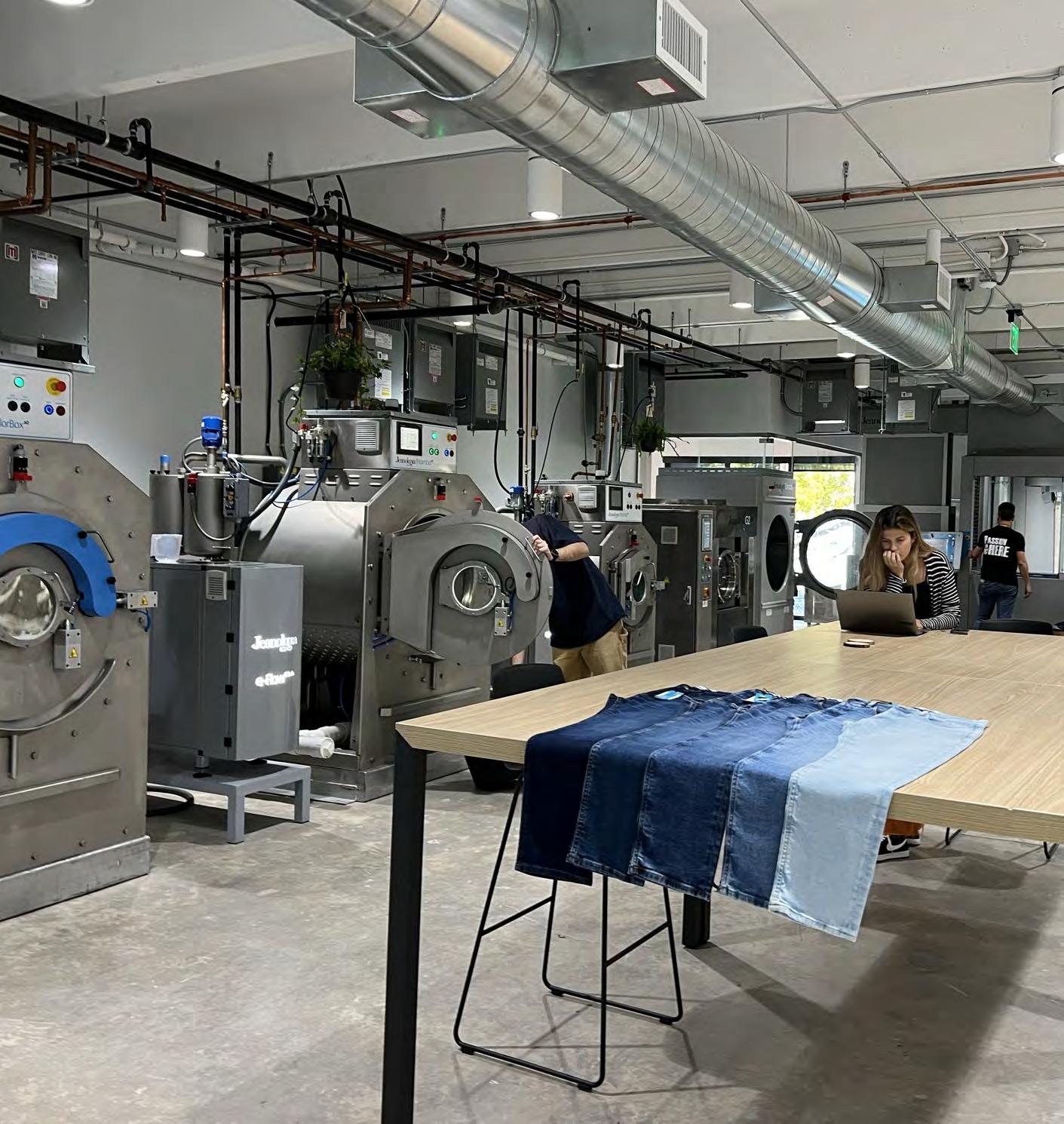
The latest industry news from Latin America by Angela Velasquez
AMERICAS

JEANOLOGIA BRIDGES DESIGN AND MANUFACTURING IN MIAMI
The denim industry is global with most brands having supply chains that span across multiple continents. Despite various avenues of communication and twhe increasingly digital process of creating denim, a gap persists between designers and the people executing their designs.
Spanish technology firm Jeanologia is closing that gap.
The company opened its Miami Innovation Hub in 2023 as a regional center for education, research and development, enabling brands across the Americas to create and refine sustainable wash recipes and laser designs— processes that can then be replicated in manufacturing facilities globally.
Comparable to a denim WeWork, the facility has become a neutral space for creative collaborations, connecting designers to the wider manufacturing world and the people and technologies that bring their ideas to life in scalable and sustainable ways. Global mills from Pakistan, Bangladesh, China, Vietnam and Mexico and Colombia leverage the hub as a place for establish strategic relationships with clients. Some come to test new fabrics on Jeanologia’s machinery. Others including Evlox, Interloop, Kaltex and Twin Dragon invite their brand partners to work on future products.
To celebrate its 30th anniversary, Jeanologia is hosting a series of monthly workshops. Each one focuses on a different topic from sustainability to digitization.
“Many designers never travel to their manufacturing companies, because they are not the product developers,” said Pepa Silla Casanova, strategy business manager for Jeanologia’s Miami Innovation Hub. “Designers usually stay at their companies’ New York or Los Angeles headquarters and don’t have the chance to interact with the technologies and with the way the product is really manufactured.”
The Miami Innovation Hub provides designers hands-on access to the technologies, which Silla Casanova said can better inform their designs. While the extent to which sustainable finishing technologies are integrated into their operations varies, all share a common interest in exploring the latest innovations available. Since launching, the Miami hub has welcomed large brands like American Eagle, Guess and Target along with a range of emerging labels. Brands from Latin America are also using the hub. Jeanologia has a center in Brazil, but Silla said it is primarily for the domestic market.
While Jeanologia continues to prioritize innovation—Silla Casanova said they’re
G Jeanologia has local teams around the world in
working on improving digital washes and exploring ways to re-finish existing products— the company is increasingly becoming a support system for brand partners trying to navigate the complex denim market.
Despite the denim industry’s global nature, factors like shrinking travel budgets and growing travel safety concerns are constraining how teams operate. Additionally, tariffs are putting a strain on companies, driving many sourcing teams to rethink their sourcing strategies. Jeanologia has formed several partnerships with factories in Mexico, Guatemala and Colombia in the last couple of years as more brands focus their efforts on onshoring and nearshoring their production. Brands need to be agile and confident, Silla Casanova said. By developing their washing techniques in Miami, brands regain control of their designs and can take their recipes to any vendor in any country with technological capabilities.
“The Miami hub is not just a place for creation and design…Jeanologia is helping brands that may not be traveling or have never traveled to countries that are more favorable in terms of tariffs or other reasons. We have local teams everywhere and because we have customers around the world, we can help them implement new sourcing strategies in a better way from our Miami hub,” she said.
JEANOLOGIA IS HELPING BRANDS THAT MAY NOT BE TRAVELING OR HAVE NEVER TRAVELED TO COUNTRIES THAT ARE MORE FAVORABLE...”
Pepa Silla Casanova, Jeanologia
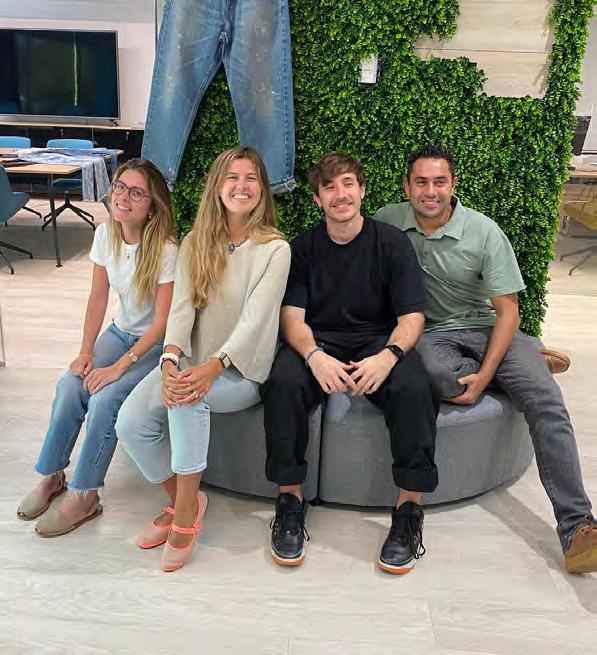
H The Miami Innovation Hub provides designers access to technologies like ozone and laser.
key sourcing regions.

GLOBAL DENIM ENCOURAGES STUDENTS TO EXPLORE CIRCULAR DESIGN PROCESSES
Universidad Anáhuac México design students unveiled the results of a circular design project sponsored by Global Denim.
The project, called “Circular Denim Moda Anáhuac México,” provided 21 sixth-semester students with the opportunity to develop a fashion collection in denim aligned with circular economy principles, incorporating design research, textile experimentation, and innovative design strategies.
The theme aligns with Global Denim’s efforts to increase the use of circular fibers in denim manufacturing. It also highlights the mill’s ongoing focus on education. Previously, Global Denim partnered with students from Anahuac Mexico Norte University in Mexico City to develop problem-solving collections.
Guided by Anatt Finkler, Global Denim’s creative director, the project’s academic focus encouraged critical reflection on the denim industry by allowing students to take an active role in addressing contemporary fashion challenges.
ARTISTIC MILLINERS BEGINS PRODUCTION IN MEXICO
AM Mexico, the newest division of Artistic Milliners, has begun production.
The state-of-the-art denim production facility in Parras, Mexico, featuring a 150,000-square-foot production floor, specializes in producing and washing jeans. Artistic Milliners acquired the former Dickies de Parras S. de RL de CV facility last August and began the process of upgrading the 10-acre complex consisting of two buildings.
Key Artistic Milliner leadership and partners celebrated the opening of AM Mexico on May 26. AM Mexico enables Karachi, Pakistanbased vertical denim manufacturer to meet the needs of existing and new customers looking for production in the Western Hemisphere. The facility’s strategic location near the U.S. border enables reduced shipping times and costs compared to overseas sourcing. Its proximity to major transportation hubs in Torreon and Saltillo ensures smooth logistics and accessibility.
Upon opening, AM Mexico is producing 30,000 garments a month. Capacity will grow to 450,000 within the year.
Omer Ahmed, Artistic Milliners managing director, said AM Mexico will shave up to 13 weeks off delivery timelines, unlocking “the benefits of reduced risk and supply chain resilience.”
Murtaza Ahmed, Artistic Milliners CEO, said AM Mexico marks a significant milestone in Artistic Milliners’ expansion.
“The opening of AM Mexico is the culmination of years of investments and commitments to Artistic Milliners’ customers, who from day one supported our vision to offer them multi-country, multicategory products,” he said. “They now have a denim factory in this hemisphere that meets and exceeds their expectation for product creation and automation.”
Artistic Milliners has been heavily investing in production in North and Central Americas since 2020. The company’s network in the Americas includes SFI and Star Fades Studio, a design development hub in California, and the SFI factory in Guatemala.
The company also has a strategic partnership Cone Denim, which has a factory in Parras. Clients are encouraged to source fabrics from regional mill partners so that fabric can stay local.
AM Mexico features cutting-edge automation across cutting, sewing, finishing and laundry operations The facility integrates machinery and technology from leaders such as Lectra, Jeanologia, Tonello, C Tex, IMA, Morgan, Tajima, Hashima, Sip-Italy, Smart MRT and Triveneta.
This focus on innovation is carried into products. In April, AM Mexico and Los Angeles-based sister company Star Fades International (SFI) announced a partnership with The Lycra Company to offer Lycra FitSense denim technology for the first time in North America. The yarn and garment processing technology allows brands to customize jeans with targeted compression.
E A design from the “Circular Denim Moda Anáhuac México” project by student Antastacia Callejaz.
F AM Mexico is one of several intiaitives by Artistic Milliners to promote nearshoring.
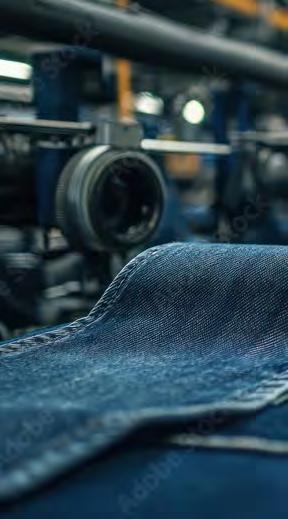
GREEN STORY’S NEW PILOT SUPPORTS EMERGING LATIN AMERICAN BRANDS
Anew pilot program provides small and medium-sized fashion producers in Latin America with access to the essential traceability tools that increasingly vital requirement to participate in the global textile and apparel industry.
Sustainability intelligence provider Green Story is partnering with Fundamentally, a Mexico City-based community platform dedicated to strengthening Latin American fashion and the industry’s commitment to sustainability, to launch Fundamentally Green Metrics – LATAM.
The data-powered program is designed to accelerate sustainability in the region’s fashion sector by making Green Story’s expertise in Life Cycle Assessments (LCAs), Digital Product Passports (DPPs), and comprehensive environmental data accessible to 30 selected brands and manufacturers that produce in Latin America.
The company’s technology has already been embraced by leading denim manufacturers in Pakistan—such as Sapphire Mills, Soorty, and AGI Denim—as well as brands like Earthletica in Australia and Bayo in the Philippines.
“LATAM is becoming a sourcing hotspot, especially with the rise of nearshoring. But with that opportunity comes an urgent need for credible, science-backed sustainability data. We see LATAM as a region with immense potential. It has strong manufacturing capacity, increasing awareness of ESG issues, and a real desire to lead rather than follow,” said Akhil Sivanandan, CEO of Green Story.
The region is still catching up when it comes to access and implementation, according to Diana Hernandez, CEO and Founder of Fundamentally. “Most transparency
technologies, like digital passports or blockchain traceability, are either too costly or too complex for the average SME in Latin America. Add to that the lack of public funding, institutional support, and clear regulation, and you get a system where only a handful of larger companies can participate. Meanwhile, smaller producers, even the most committed ones, are left out of the conversation. That’s exactly the gap we’re trying to bridge,” she said.
The need for the partnership highlights several underlying issues when it comes to scaling sustainability. “We can’t build a truly sustainable fashion system without including everyone, and Latin America has long been left out of the datadriven transformation,” Hernandez added.
LATAM’s local fashion economies are under intense pressure from ultra-cheap fast fashion imports, especially from Asia, she explained, she said. In countries like Mexico, Chile, and Argentina, small producers are being displaced and in the absence of strong EPR laws, local governments are struggling to respond and are getting excluded from regulated international markets.
That’s where Fundamentally and Green Story’s mission matters most. “By equipping underserved producers with accessible, verifiable data, we’re supporting compliance and opening the door to global markets. We’re giving visibility, credibility and competitiveness to those who have long been excluded,” Hernandez said. “Real sustainability isn’t possible without systemic change. All stakeholders are equally important.”
The program aims to strengthen the readiness of Latin American companies to meet evolving compliance standards, align with EU sustainability expectations, boost visibility among responsible buyers, enhance access to premium export markets, and build consumer trust by transparently communicating verified environmental impacts.
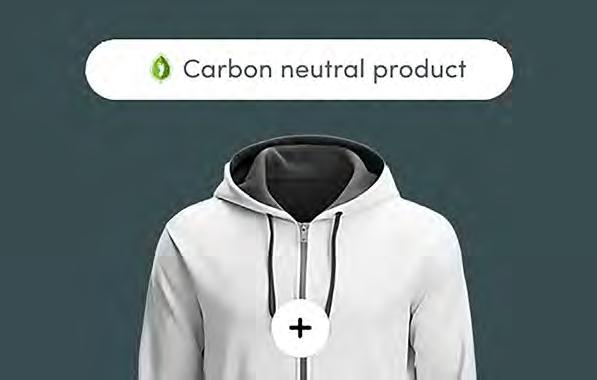
WE’RE GIVING VISIBILITY, CREDIBILITY AND COMPETITIVENESS TO THOSE WHO HAVE LONG BEEN EXCLUDED.”
Diana Hernandez, Fundamentally
E Participating companies will have access to Green Story’s expertise in Life Cycle Assessments and Digital Product Passports.
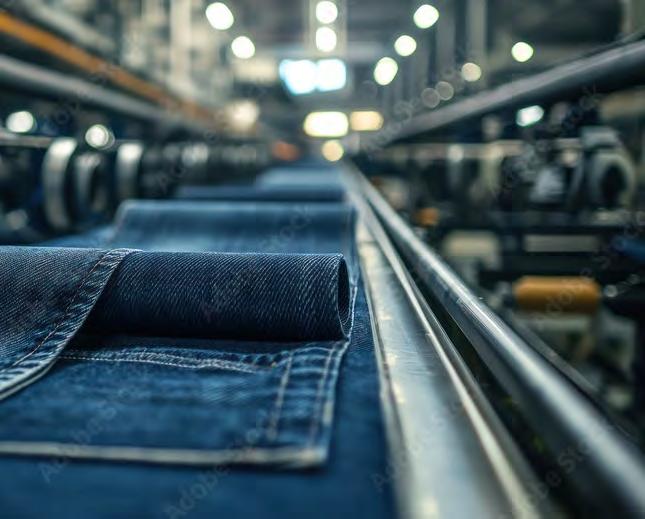
“Digital product passports are fast becoming the default language of trust in fashion. They tell a verified story about how a product was made and its environmental footprint. Our initiative is about helping LATAM suppliers meet that pressure head-on, by giving them the tools and support they need to not only comply, but thrive,” Sivanandan said.
Supported by a regional subsidy managed by Fundamentally, companies will receive “preferential rates tailored to the Latin American context.”
“By doing so, we aim to help reduce the financial and technical barriers that have historically limited small producers in the region. This initiative strongly aligns with our mission to enable better data for better decisions, across all stakeholders worldwide,” Sivanandan said.
Participants will be selected jointly by Fundamentally and Green Story.
Selected participants should demonstrate a strong interest in improving their sustainability practices and traceability systems, and a commitment to preparing for international markets.
Benefits include unlimited DPPs, the opportunity to use Green Story data in support of Higg Index submissions, optional carbon offsetting through verified projects, training resources and API connectivity for integrating impact metrics into e-commerce platforms.
The pilot is designed to be inclusive of all types of producers in the apparel space, but Hernandez said the focus is on small and medium-sized slow fashion producers who are often excluded from these tools, despite being the ones making big efforts toward sustainability.
“These are brands with strong relationships with their customers, rooted in their communities, but lacking the verified data to back up what they’re already doing,” she said. “By making this technology accessible to them, supporting compliance and opening the door for international markets also we’re strengthening a culture of transparency from the bottom up. Including a diverse range of producers also creates a stronger collective push toward data-backed sustainability.”
The pilot will run for three months, and participating brands will retain access to Green Story’s platform and tools for one year following their onboarding date. Based on the outcomes of the pilot, Green Story and Fundamentally aim to expand the reach of the program to support many more brands and manufacturers committed to sustainability throughout Latin America.
BY TH3 NUMB3R5
Denim may be synonymous with American fashion, but the world’s love for jeans is a truly global affair. Recent consumer research from Cotton Incorporated highlights the key qualities people around the world look for in their denim—and how much they’re willing to invest in the perfect pair. ANGELA VELASQUEZ

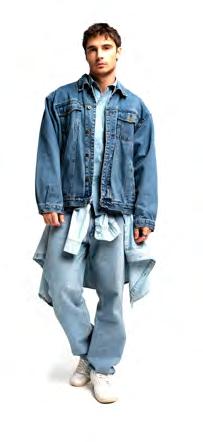


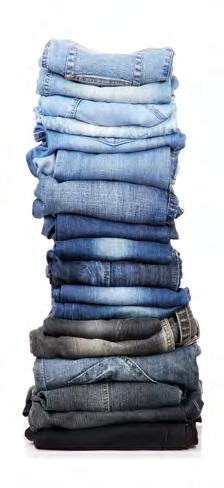


SOURCING JOURNAL


▲ SCAN
